Rome is an endlessly inspiring and ethereal classic beauty, aptly dubbed the Eternal City. Its artistic heritage were, without a doubt, the Roman Empire and the papacy. Both left indelible marks on the city.
With so many stunning attractions, it’s essential to have a plan of attack to make the most of your time.
This 3 day Rome itinerary covers everything you need to see, including the classic must-visit attractions, historic landmarks, the Imperial ruins, and some sweet hidden gems.
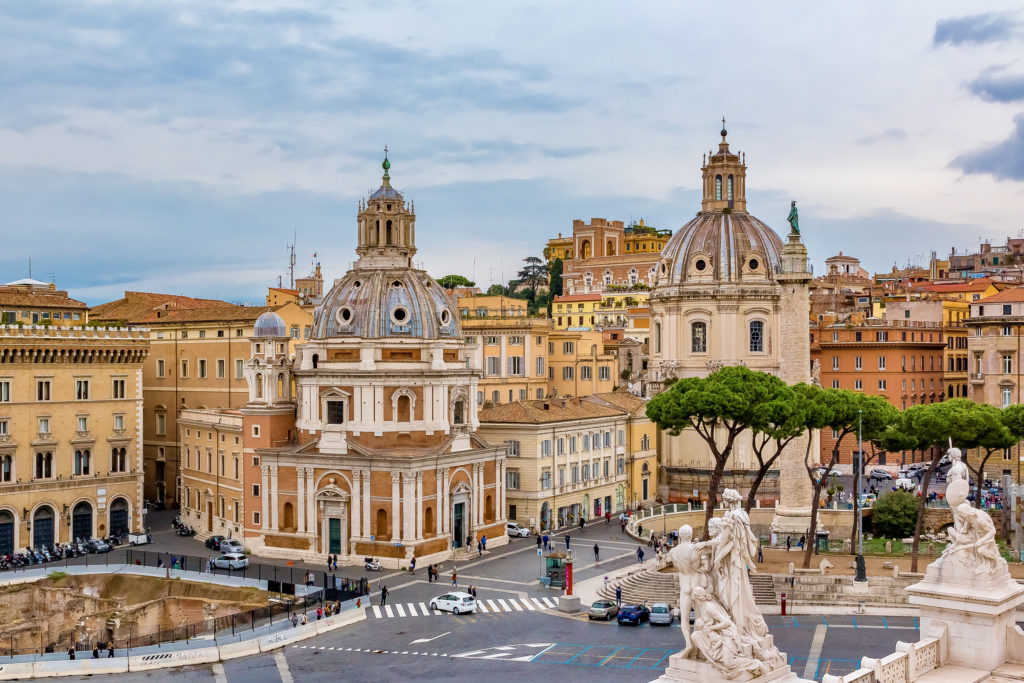
Overview of 3 Days In Rome Itinerary
Here’s a quick snapshot of what you can see with 3 days in Rome:
Day 1: Colosseum, Roman Forum, Palatine Hill, Monti neighborhood, Piazza Venezia, and the Capitoline Museums
Day 2: Campo dei Fiori, Pantheon, Piazza Navona, Trevi Fountain, Spanish Steps, Borghese Gallery, Piazza del Popolo
Day 3: Vatican Museums, St. Peter’s Basilica, Castle Sant’Angelo, Villa Farnesina, Trastevere
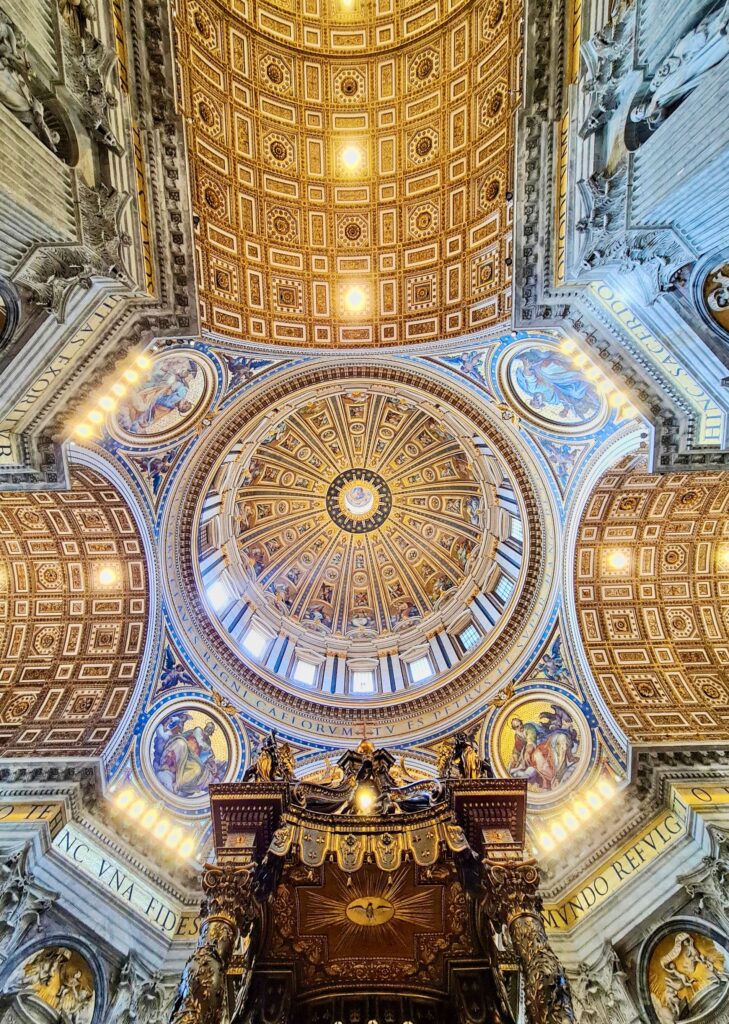
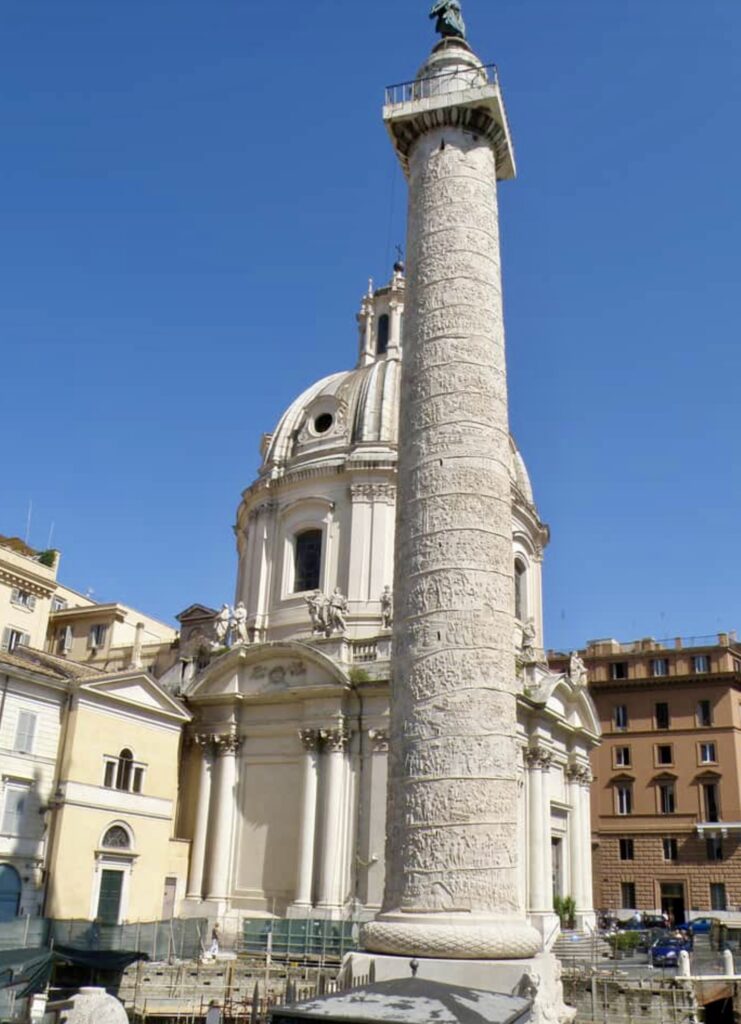
Tickets & Tours
Three days is a decent amount of time to explore Rome. But you’ll need a plan and pre-purchased tickets to hit all the top attractions.
Here are some of the top tours and tickets you may want to book well in advance, especially during high season.
- 4 hour private day tour of Ancient Rome
- Vatican Museums entrance ticket
- Imperial ruins entry ticket
- St. Peter’s Basilica tour with dome climb
- Trastevere food tour
- Best of Rome walking tour
- Borghese Gallery tour
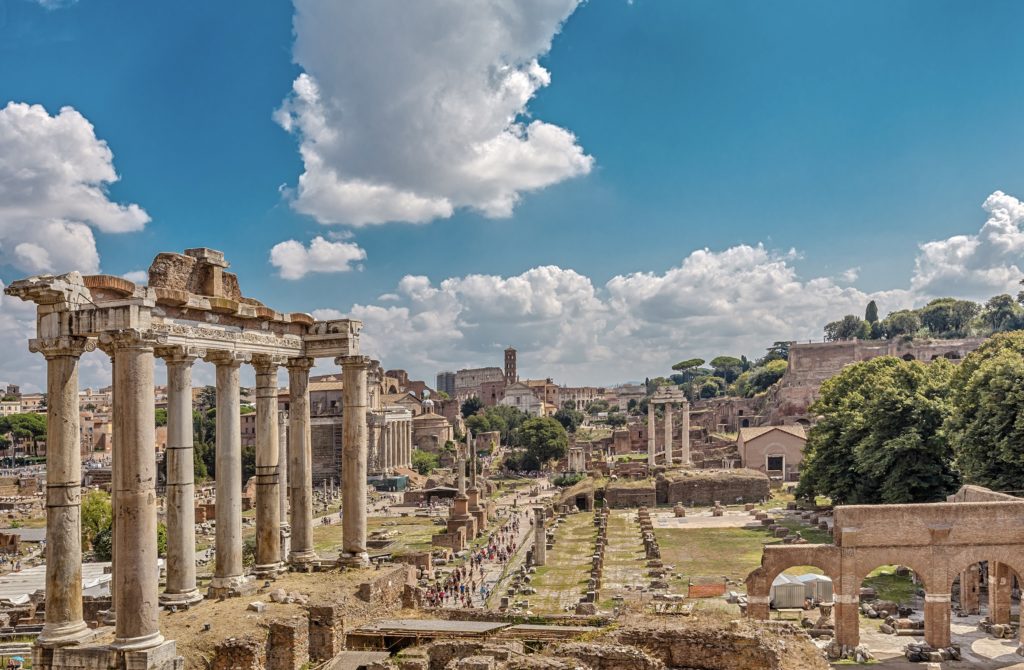
The Best 3 Days in Rome Itinerary
Day 1 AM: Imperial Ruins
Exploring the Imperial sites of Rome is an essential part of any visit to the city. Despite the passage of time and the effects of wear and tear, the magnificent ruins still inspire a sense of wonder and amazement.
The Imperial sites consist of three major attractions: the legendary Colosseum, Palatine Hill, and the Roman Forum. These sites can be accessed with a single trifecta ticket or on a guided tour.
Here are some tours to consider to help bring the sites to life:
- tickets + a 2 hour guided tour for all 3 sites
- 3 hour guided tour and entry to all 3 sites
- tickets & tour of all 3 sites + underground Colosseum access
- skip the line private guided tour with an art historian
- skip the line private tour of all 3 sites + the underground Colosseum
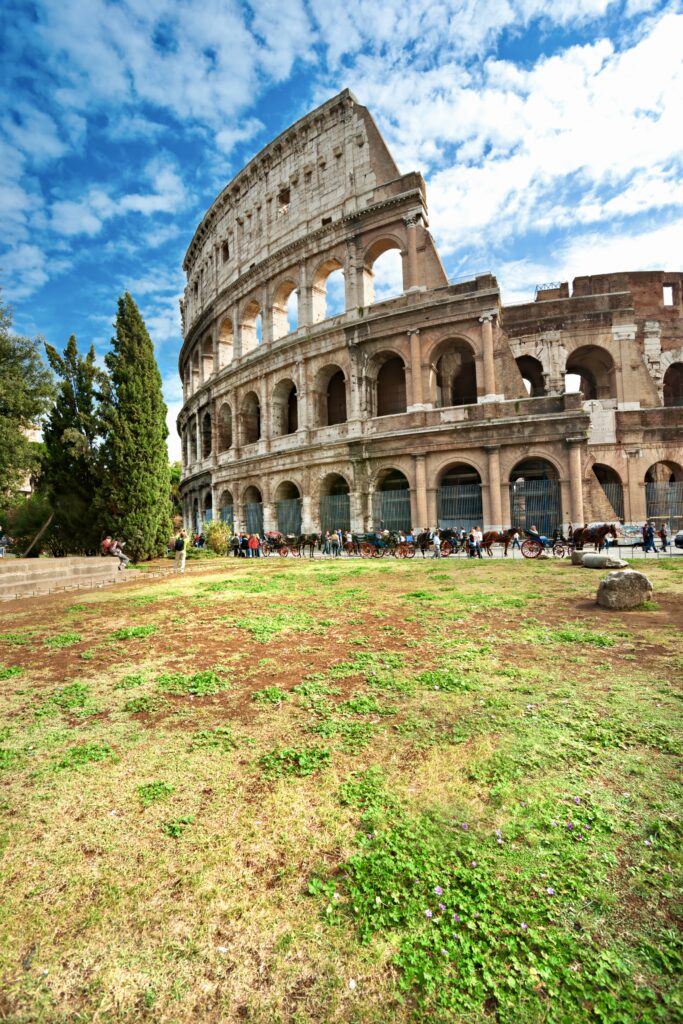
2. The Colosseum
The Colosseum, a 600-foot-high Flavian Amphitheater, is renowned worldwide for its impressive architecture. It was commissioned by Vespasian and inaugurated in 80 A.D.
The Colosseum is famously associated with gladiators, chariots, and the emperor’s “thumbs up or thumbs down” decree, which determined the fate of the fighters in the arena.
This iconic Roman monument remains the most visited landmark in Italy. Visitors can explore the seating areas and tour the arena floor.
In 2017, the top level of the Colosseum was reopened to the public, offering sweeping views of the city and potentially being the highlight of your visit.
If you’re DIY-ing the Colosseum, you need to reserve your entry time online well in advance. This is true even if you have a skip-the-line Roma Pass.
If you buy your ticket directly from the official website, you will specify the exact time and date. You can’t visit the Colosseum without a reserved entry time!
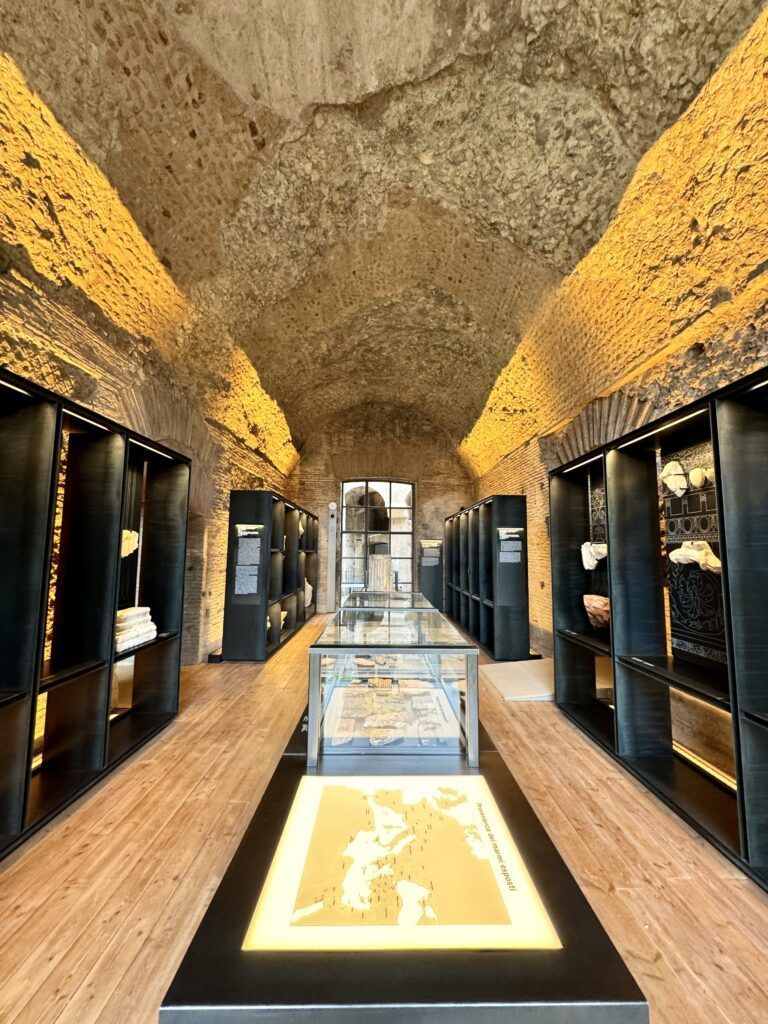
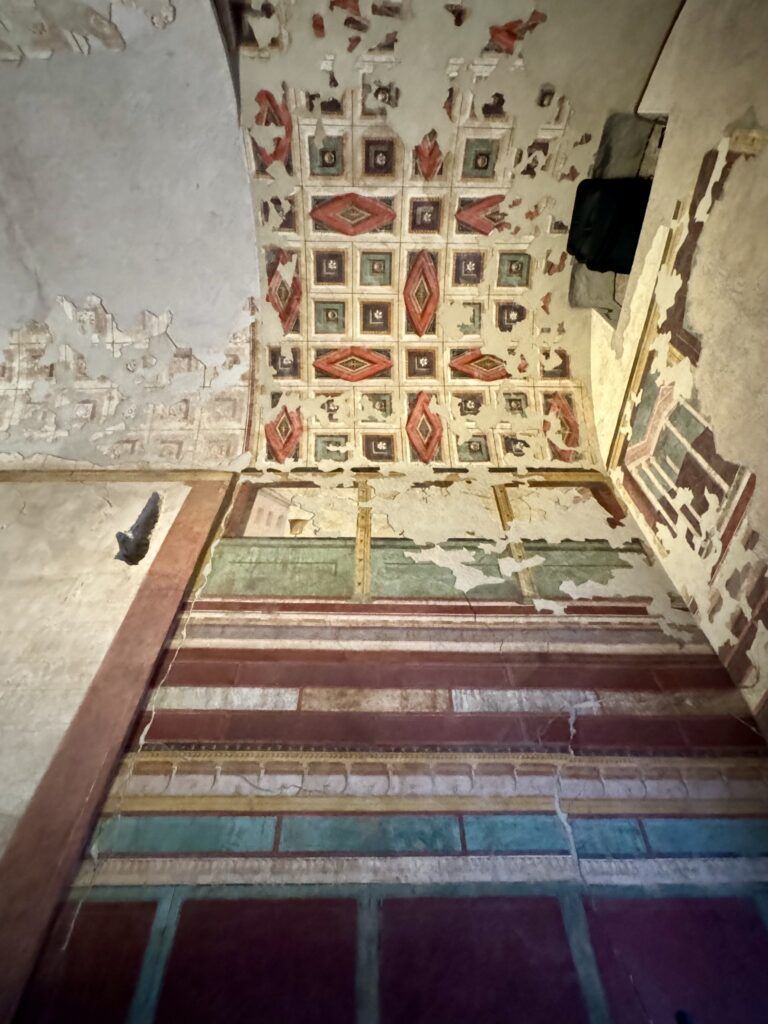
3. Palatine Hill
Palatine Hill is one of the loveliest spots in the city. It offers a glimpse into the luxurious lifestyles of the elite citizens of Imperial Rome.
Among the ruins on the hill, the sprawling Domitian’s Palace stands out as the most impressive. This palace was built around 81 A.D. and belonged to Emperor Domitian, a member of the Flavian dynasty.
The other must sees are:
- House of Augustus (2,000 year old Pompeiian frescos)
- Palatine Museum (statues and frescos from imperial Palatine
- Domus Tiberiana (newly opened palace)
You can only visit these three sites with a SUPER ticket, but it’s definitely worthwhile. I can highly recommend this guided tour with a PhD.
4. The Roman Forum
Once you’ve explored Palantine Hill, it’s time to move on to the Roman Forum.
The forum is a rectangular valley that runs from the Arch of Titus to the Capitoline Hill, with the main road being the Via Sacra. It was the heart of ancient Rome, where power was held and showcased.
The district was grandiose and consisted of stunning white temples, grand basilicas, and lively public spaces.
Make sure to stroll by the Arch of Titus, the Basilica of Constantine, the Temple and House of the Vestal Virgins, and the three columns of the Temple of Castor and Pollux.
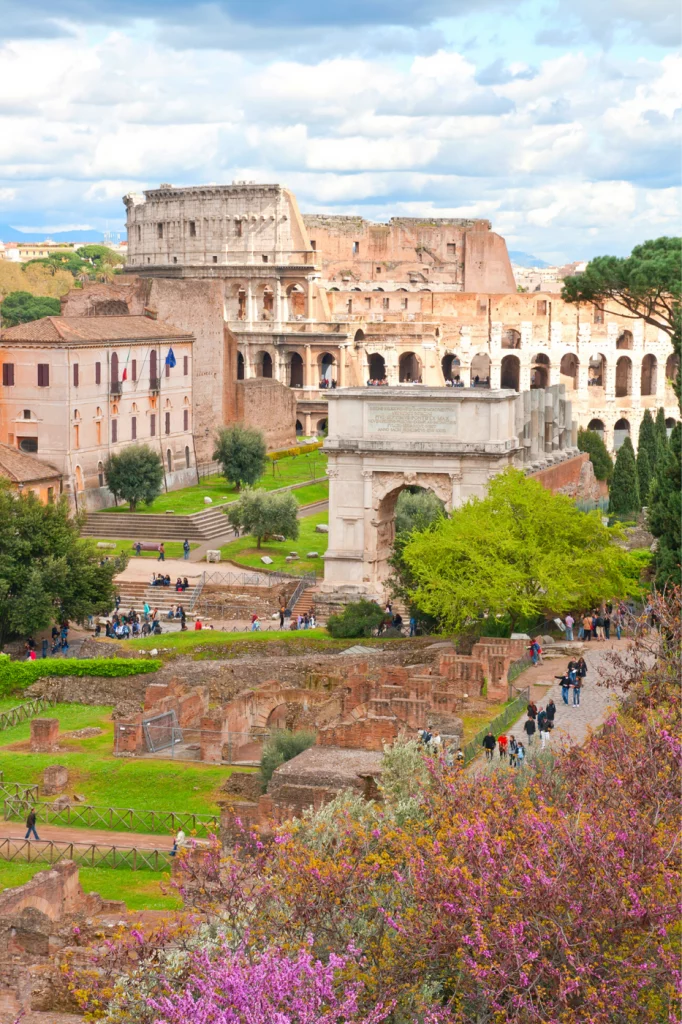
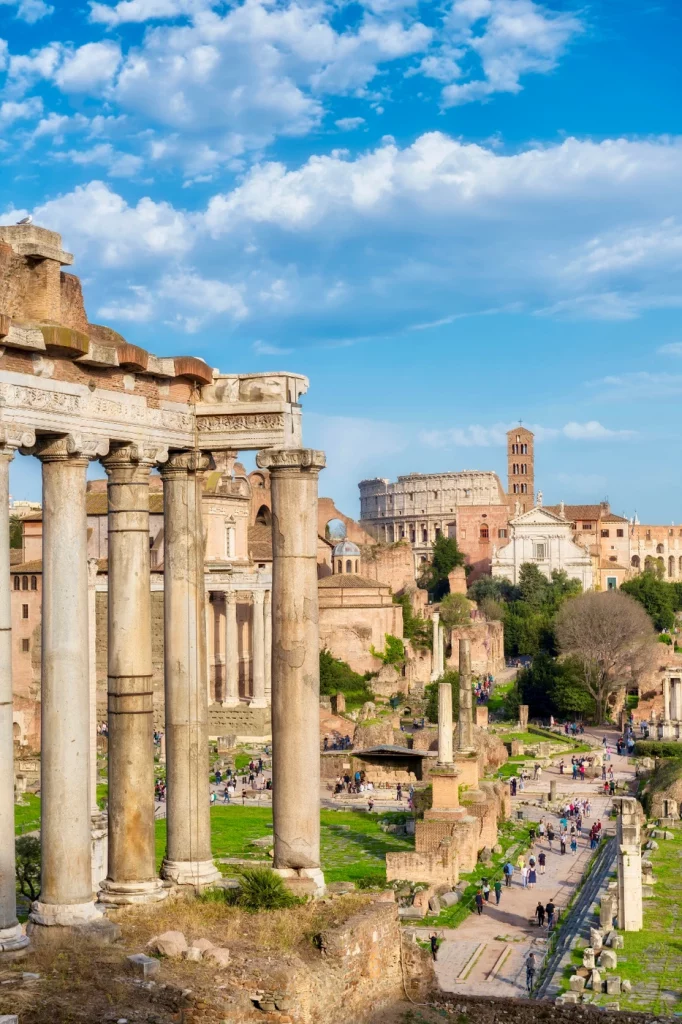
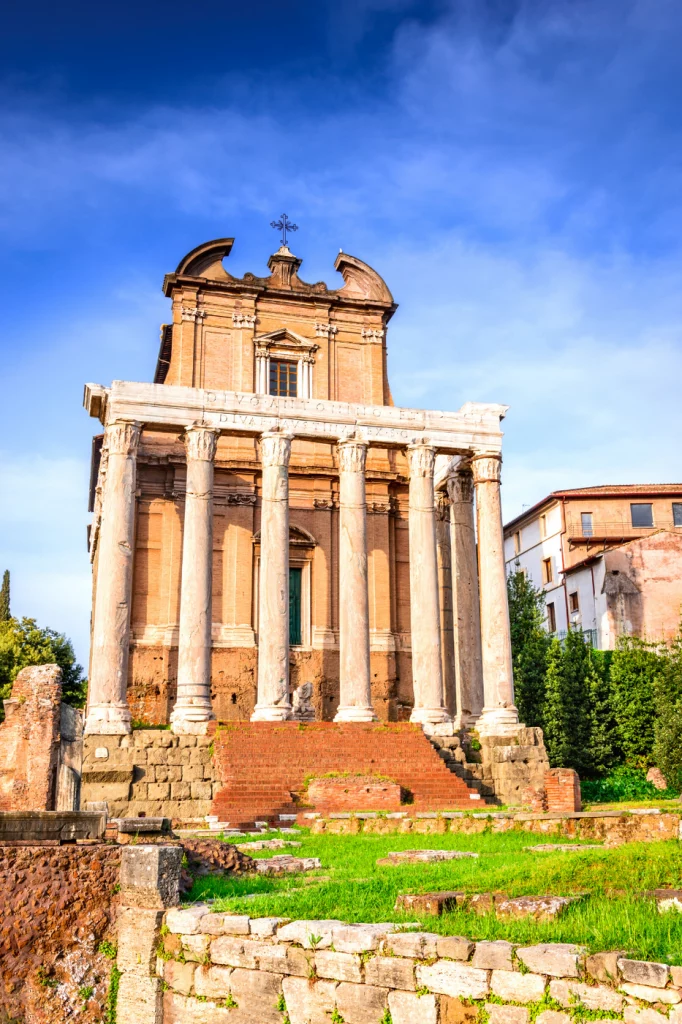
You’ll also find a small temple dedicated to Julius Caesar, where inside you can see a mound of dirt covered with coins and flowers marking his grave.
If you’ve purchased the SUPER ticket, you can also visit the Church of Santa Maria Antiqua located at the back of the Temple of Castor and Pollux.
This church is known as the “Sistine Chapel of the Roman Forum” due to its elaborate and newly restored frescos. They are some of the oldest early Christian frescos on the planet!
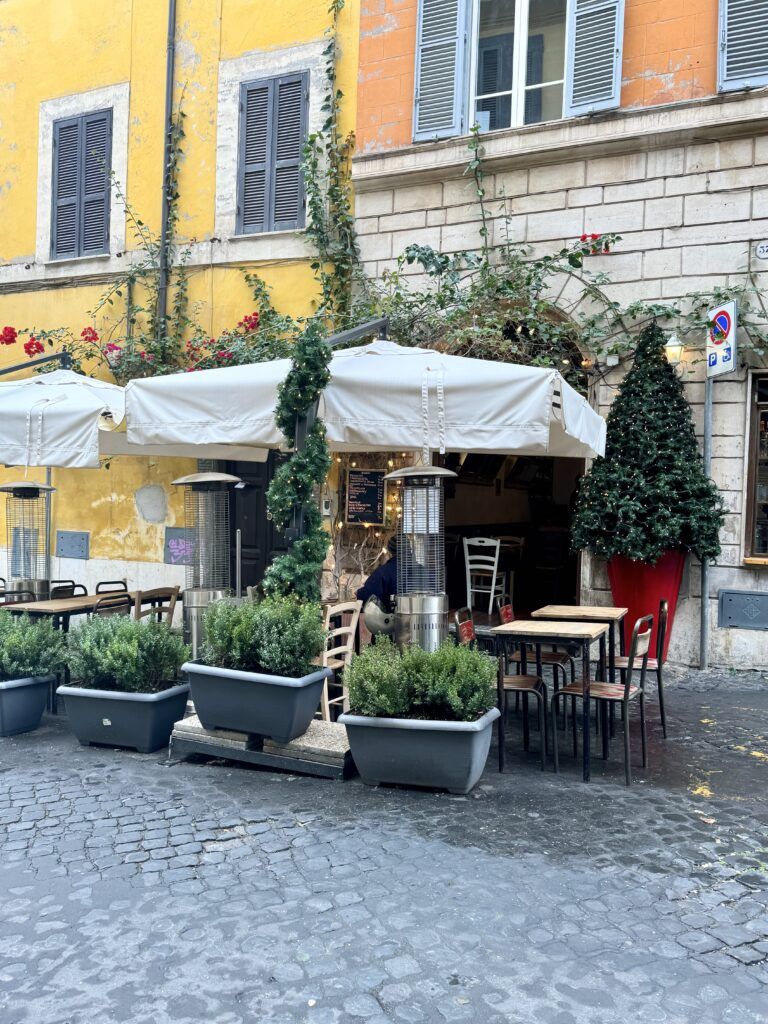
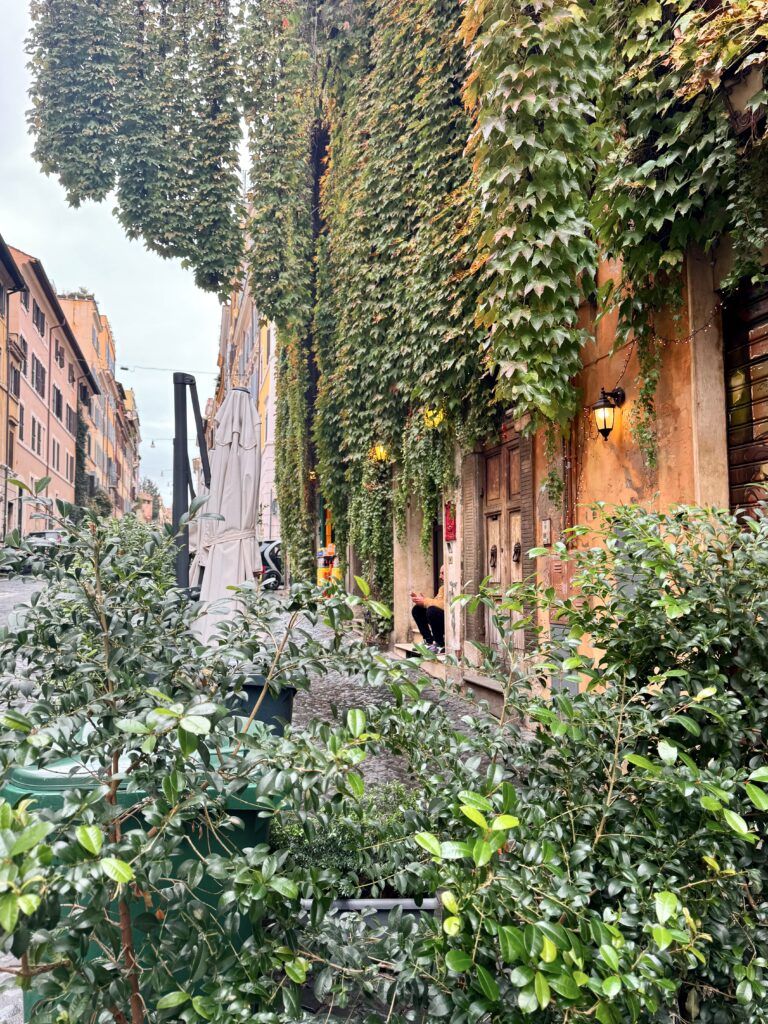
Day 1 PM: Monti and Capitoline Hill
After your exploration of the ruins, take a quick 5 minute stroll to the adjacent Monti neighborhood of Rome.
Monti is now considered the city’s trendiest district, but it was once a slum in ancient Rome. Nowadays, it’s filled with unique shops and hip eateries that are sure to captivate your attention.
Make sure to take a detour off the main street and explore the ivy clad side streets of Monti. There are lots of great restaurants on Via Urbana.
Monti is also a great place to take a guided food tour or a guided wine tasting tour.
Monti has one absolute must see site — the Santa Maria Maggiore Church.
Personally, I liked it better than St. Peters’ Basilica. It’s much older, dating to the 5th century A.D. And it has absolutely breathtaking mosaics in the triumphal arch and nave.
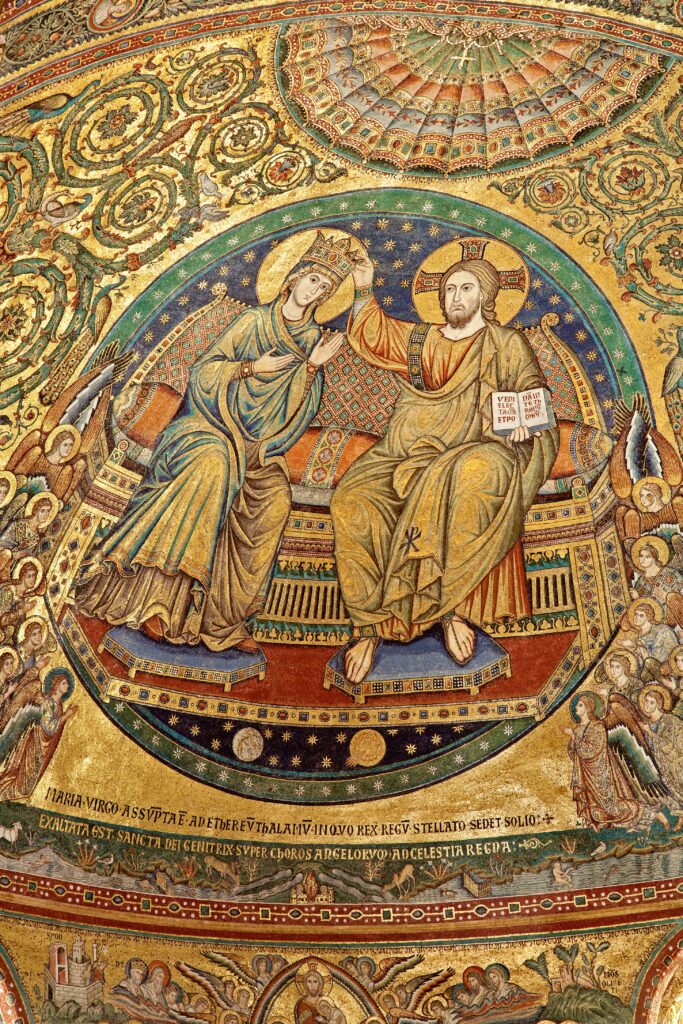
A short stroll from Santa Maria Maggiore will take you to the charming Santa Prassede church.
One of the main attractions of Santa Prassede is the stunning Chapel of Saint Xeno, which dates back to the 9th century.
Adorned with dazzling mosaics from floor to ceiling, this chapel was once known as the “Garden of Paradise” during the Middle Ages. It’s truly a sight to behold.
When you’re done in Monti, head over to the the Vittoria Emmanuel II Monument on Capitoline Hill, also known as the “typewriter” or “wedding cake” building. For the best views, buy a ticket for the elevator that takes you up to the viewing terrace.
When you’re done swooning over views, head back down the stairs. Take a left at the bottom of the stairs and then another left.
A few hundred feet further along your walk, you will encounter a magnificent stairway leading up to the Piazza del Campidoglio at the summit of Capitoline Hill, designed by Michelangelo.
Don’t miss the opportunity to climb the stairs and explore the Capitoline Museums at the top.
The museum buildings are connected by an underground passage called the Tabularium. It contains the impressive collection of Pope Sixtus IV, an important patron of the Renaissance era.
Among the museum’s greatest treasures are the Equestrian Statue of Marcus Aurelius, the She-Wolf of Rome, the Dying Gaul, ruins of a massive statue of Emperor Constantine, and Commodus as Hercules.
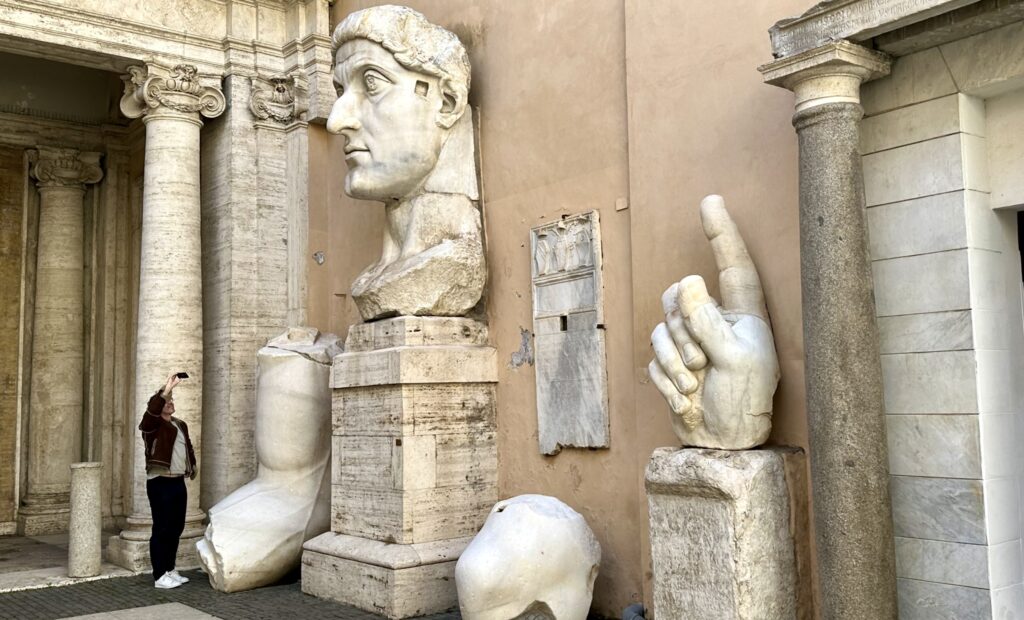
After exiting the museum, head down the alleyway on the right side of the square under an arched building.
That will take you to a viewpoint over the Roman Forum. This is the best view you’ll have of the forum.
You should also make a quick detour to the Church of Santa Maria d’Araceli. It’s an ancient brick church mostly known for its beautiful frescos by Pinturicchio, an early Renaissance artist.
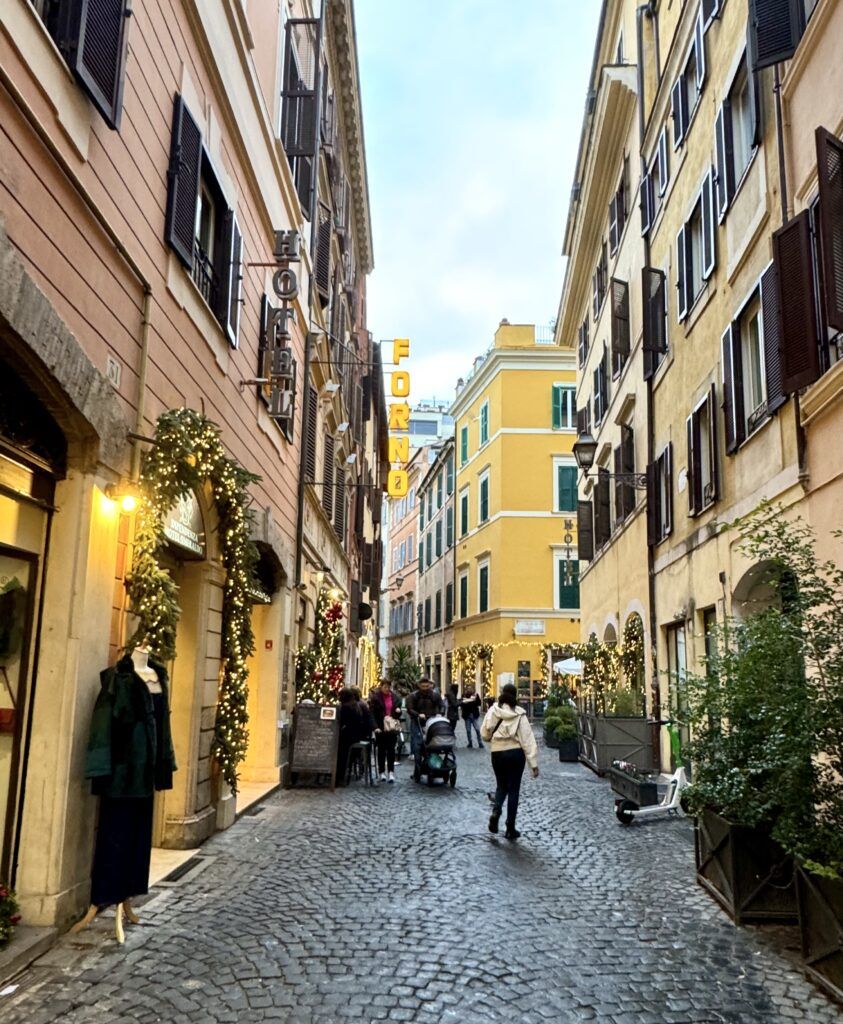
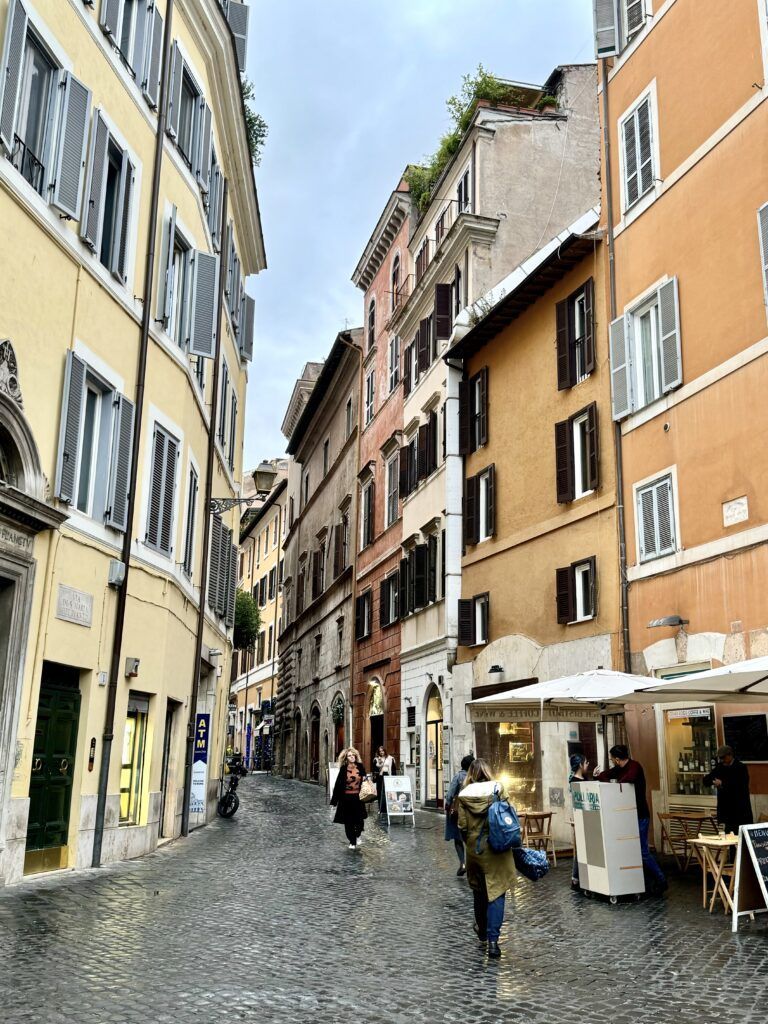
When hunger calls after this hectic day, head to the Jewish Ghetto neighborhood. It’s just a stone’s throw away, on the banks of the Tiber River.
I just wandered around the evocative place. It’s a cute enclave filled with ruins, quaint shops, kosher eateries, and an atmosphere steeped in history.
Have dinner at Ba’ghetto. This neighborhood is also an excellent place to go on a guided food and wine tour.
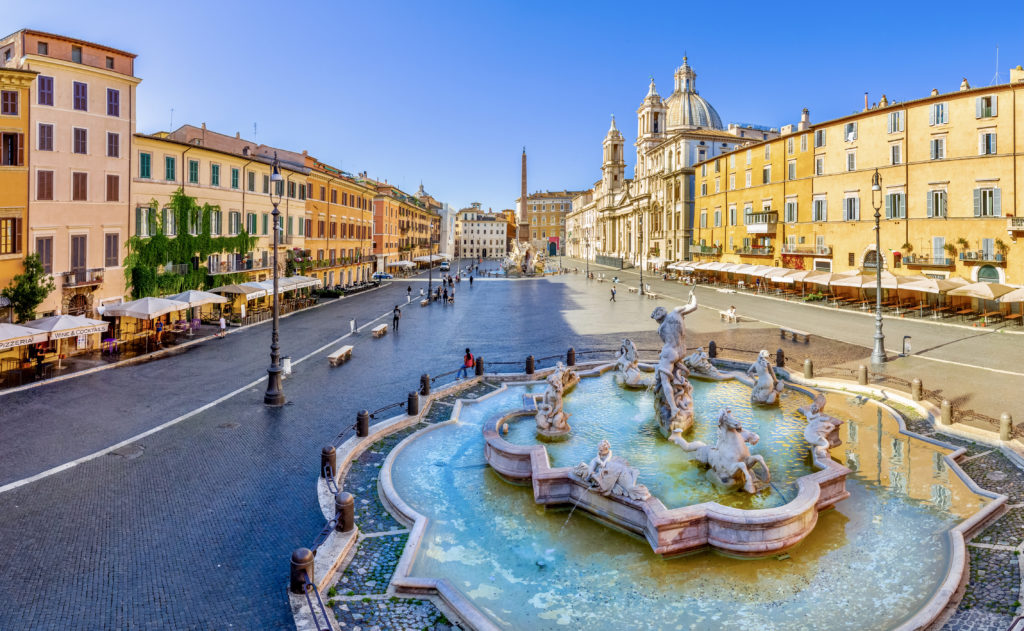
Day 2 AM: the “Heart of Rome” Stroll
Begin day 2 of your 3 days in Rome itinerary with a classic walk through historic Rome.
You might consider booking a 3 hour walking tour to get oriented. You can also book a private walking tour of this beautiful part of Rome.
1. Campo de’Fiori
Start at Campo de’ Fiori and end at the Spanish Steps, visiting the Trevi Fountain and Pantheon along the way.
Campo de’ Fiori is Rome’s colorful market square. It’s name means “field of flowers.”
In the center is a statue of Giordano Bruno, a 16th century friar and philosopher who was burned at the stake for his scientific theories.
Here, you’ll find fresh produce and can pick up some souvenirs like olive oil, pasta, or limoncello. There’s also a cluster of galleries near Campo de’ Fiore.
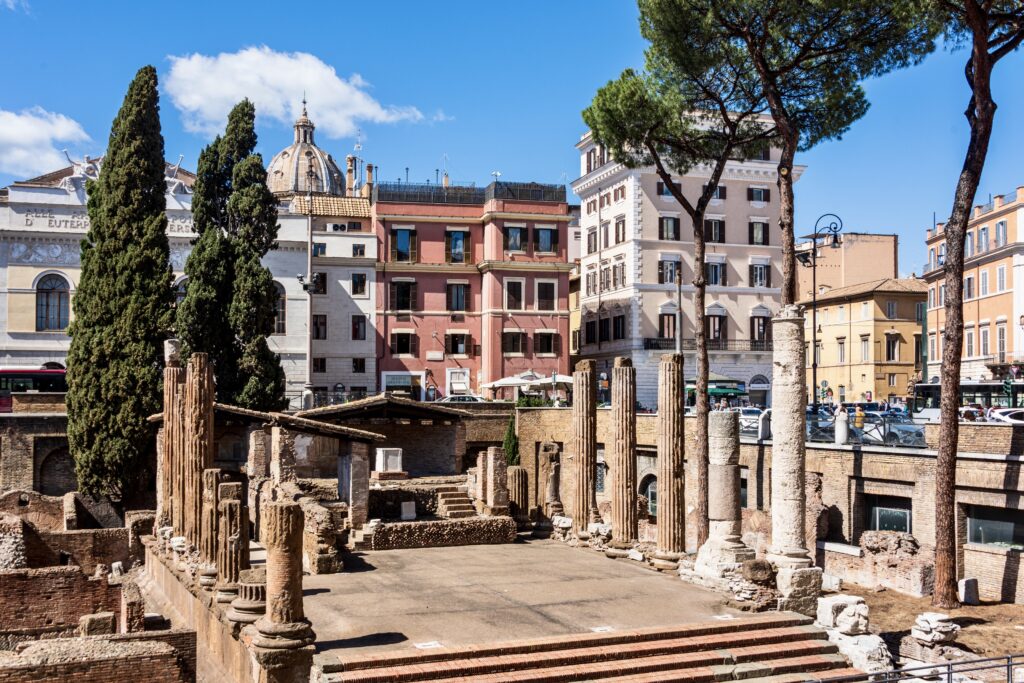
2. Largo di Torre Argentina
Then, head to Largo di Torre Argentina. The square is home to the remains of four Republican-era temples and the famous “Area Sacra.” The latter is an archaeological site that includes the ruins of the Theater of Pompey and a curved portico.
The site was first excavated in the 1920s. Legend (and Shakespeare) hold that this was where Julius Caesar was assassinated in 44 B.C.
For many years, tourists could only gaze at the ruins, which are below street level, from barriers above. But, in June 2023, the area opened to the public for the first time.
For $5.50, you can stroll also elevated walkways and inspect the ruins. You can also check out the onsite cats, who are part of a cat sanctuary.
>>> Click here to book a ticket
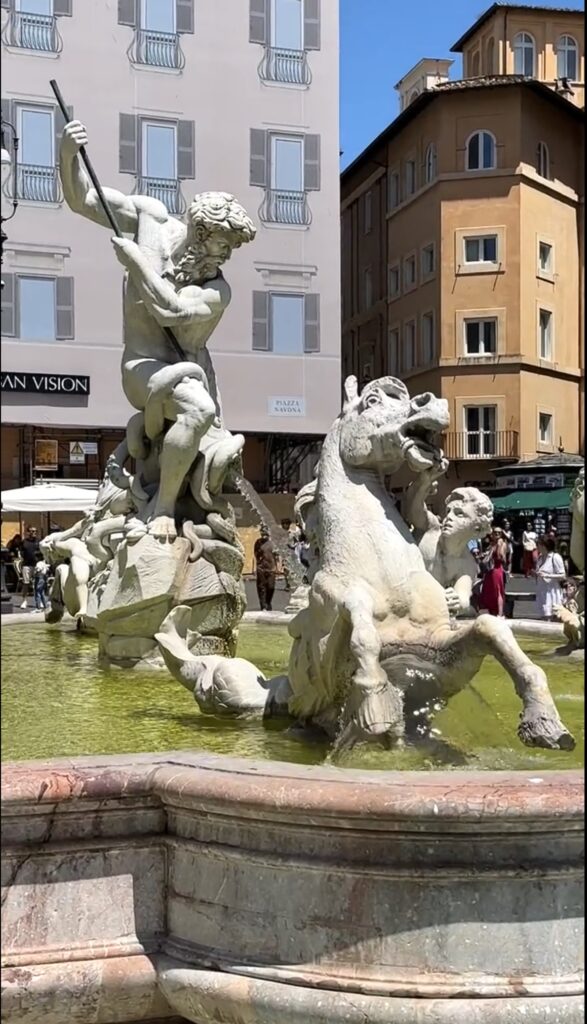
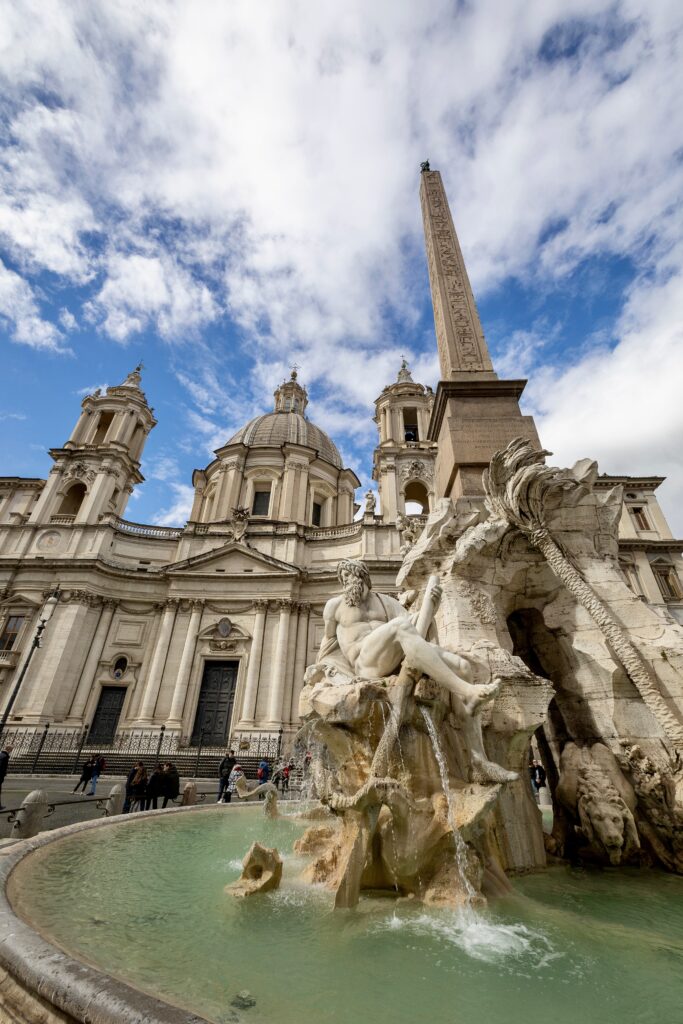
3. Piazza Navona
Your next stop is the iconic Piazza Navona. It’s a Renaissance masterpiece complete with elegant buildings, sublime fountains, and outdoor cafes.
The piazza dates back to the time of Domitian. The emperor used it as a racetrack (and to remind people of his family’s accomplishments).
Today’s buildings date from the 16th century. The centerpiece is the Fountain of the Four Rivers by Gian Lorenzo Bernini, the greatest sculptor of the Baroque.
Don’t neglect to pop into the Church of Sant’Agnese while you’re in the piazza. This Baroque church is one of the most beautiful churches in Rome. Itwas the work of the famed architect Borromini.
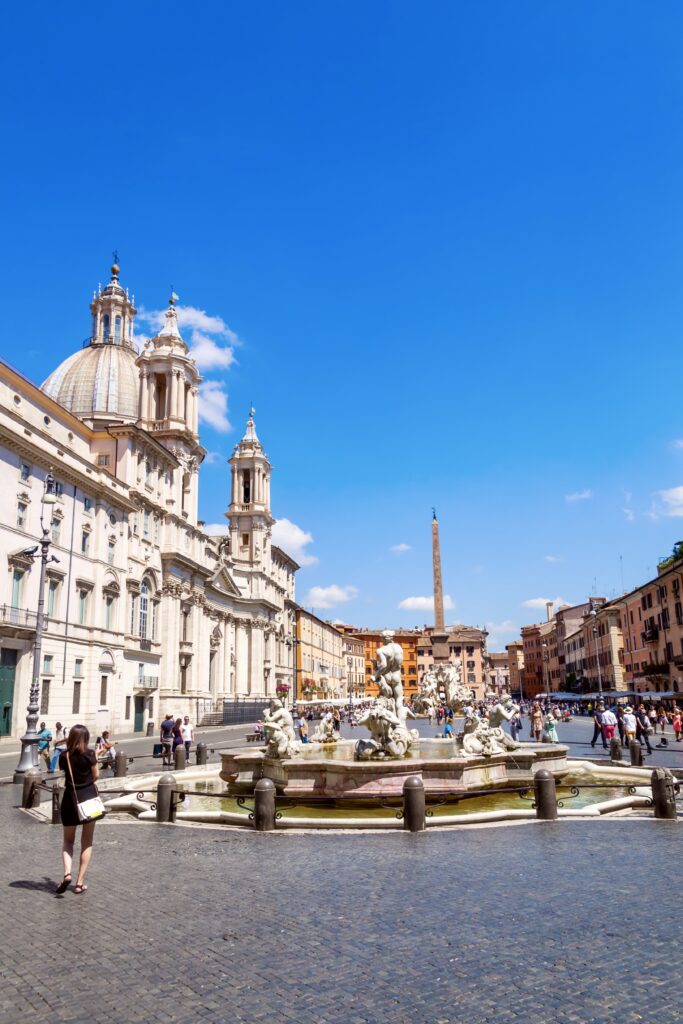
The key element is the concave facade, a design of Borromini’s that revolutionized Baroque architecture.
It’s an ingenuous device, which accommodates a small space. The design allows the church to be seen from anywhere in Piazza Navona.
Did you know there’s a UNESCO site in Piazza Navona? It’s at the north end of Piazza Navona in the underground museum, Stadio di Domiziano.
16 feet below the street level, it houses the ruins of Domitian’s stadium. Click here to book a ticket to the museum. You can also book a ticket and tour for this unique underground experience.
If you’re ready for an early lunch, try Pizzeria da Baffetto near the Piazza Navona.
4. Pantheon
Next, head to Rome’s most famous temple, the Pantheon, which is over 2,000 years old and located in a lively piazza. It’s my personal favorite building in Rome and a testament to the Romans’ genius in innovation and renovation.
The entrance features massive 40-foot single-piece granite columns, and the pediment proclaims that the Pantheon was built by Marcus Agrippa, Augustus’ right-hand man. However, it was actually built by Emperor Hadrian.
Once inside, you’ll be awed by the magnificent dome with its giant oculus, which resembles an eye in the sky. Despite its grandeur, the space beneath the dome may seem deceptively small.
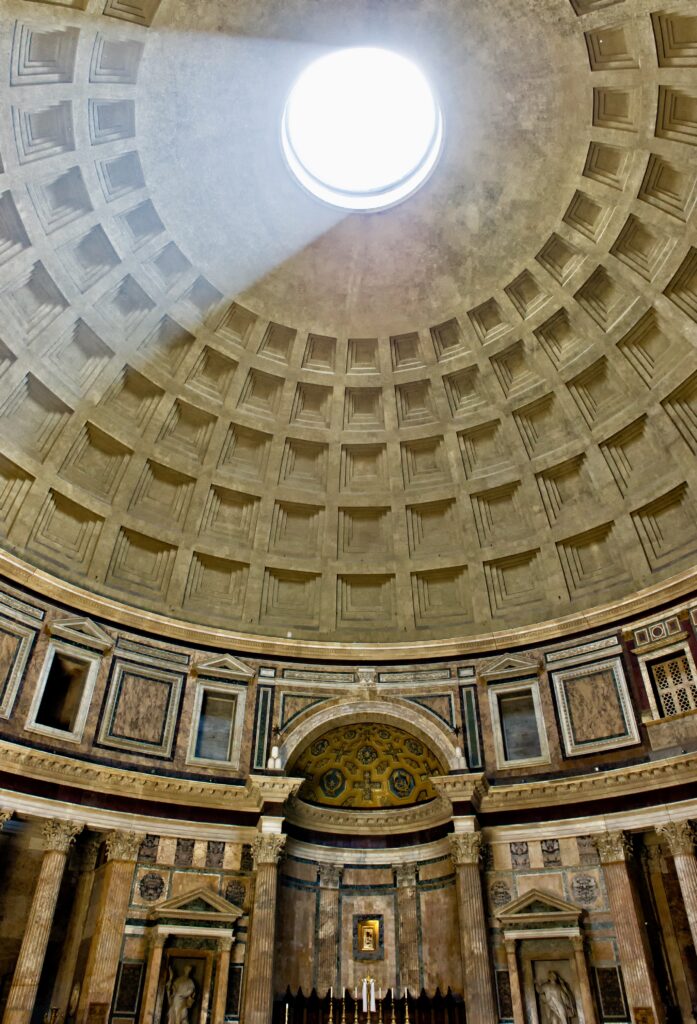
But that’s an illusion, as it’s 30 feet across. If it’s raining, water falls through the oculus and out the drains in the floor.
One of the greatest painters of the Renaissance, Raphael, is buried in the Pantheon. His tomb sports a sculpture by Lorenzo Lotti that Raphael himself commissioned.
The Pantheon used to be free to visit. But as of July 3, 2023, there is a 5 euro fee. You can purchase a ticket onsite. Or, more prudently, book a skip the line ticket in advance on Get Your Guide or Tiqets.
Right next to the Pantheon is the Basilica of Santa Maria Sopra Minerva. The Minerva is a mini-museum, a hidden gem in Rome that’s definitely worth a visit.
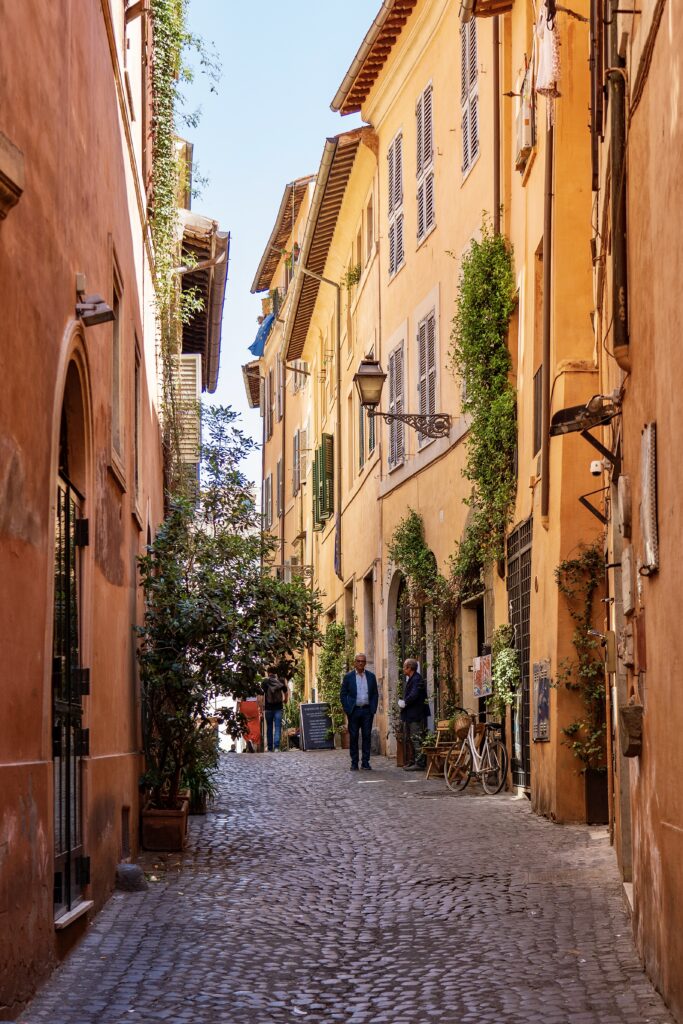
Inside, you’ll find frescos and sculptures by some of the greatest artists of the Renaissance and Baroque, including Michelangelo and Bernini. And a splendid collection of medieval and Renaissance tombs of famous saints, popes, artists, and influential figures.
You can also book a guided tour of both the Pantheon and Sopra Minerva.
5. Piazza Colonna
Then stroll to the Piazza Colonna. This square features the massive Column of Marcus Aurelius carved from Carrara marble.
Reliefs wrap around the column telling stories of Marcus Aurelius’ war exploits. The exploits were exaggerated because Rome had already begun losing skirmishes with the barbarians.
6. Trevi Fountain
Continuing your walk, you’ll come across the iconic Trevi Fountain, a striking Baroque masterpiece created by architect Nicola Salvi.
The fountain is an impressive 85 feet tall and 65 feet wide, making it the largest fountain in Rome.
In the center stands the figure of “Ocean,” surrounded by 24 spouts of water. According to superstition, if you throw a coin over your shoulder into the fountain, it will guarantee your return to Rome.
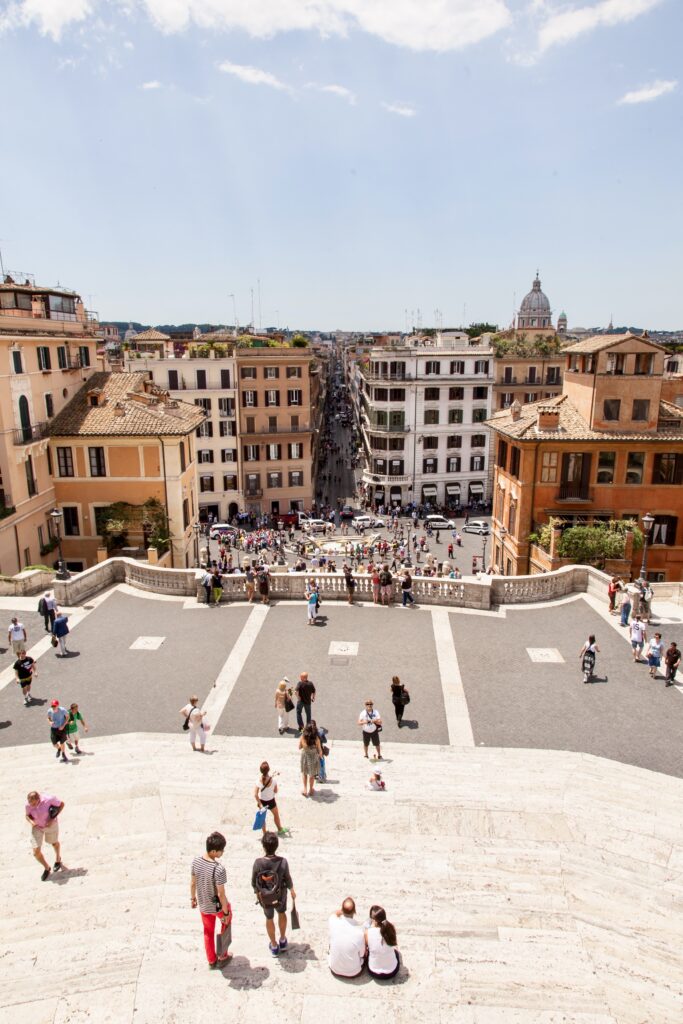
Piccolo Buco is also a tiny and delicious pizzeria only one minute from the fountain. And Emma, a chic pizzeria, is also in the historic center.
7. Spanish Steps
Once you’ve had lunch, make your way down Via Sistina towards the Spanish Steps. While I personally think the steps are a bit overhyped, they remain an iconic site in Rome that’s worth seeing.
At the base of the steps, you’ll find another of Bernini’s famous fountains – the Sinking Boat Fountain.
You may want to come back to this area in the evening. It’s just beautiful then. You can book a 3 hour guided Rome at night tour that explores this area.
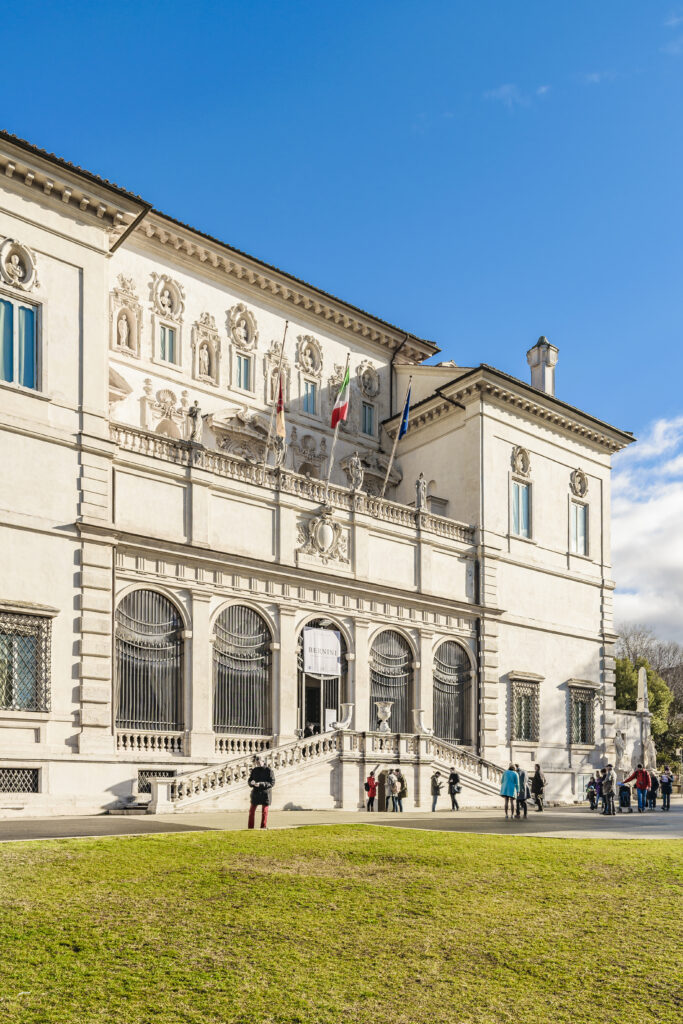
Day 2 PM: Borghese Gallery
One of my personal favorite art museums in the world is the Borghese Gallery, and trust me, I’m not exaggerating.
The museum houses an incredible collection of masterpieces set in a stunning villa adorned with frescoes and marble.
To visit the Borghese Gallery, it’s important to pre-book a ticket well in advance. They only allow a limited number of visitors every two hours, so it’s important to plan ahead.
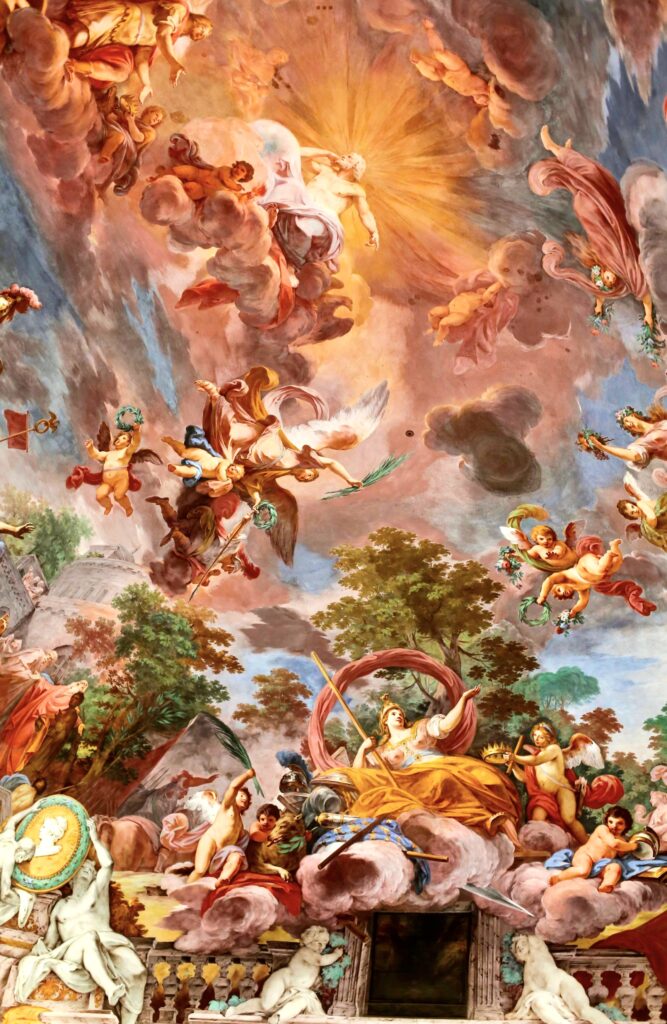
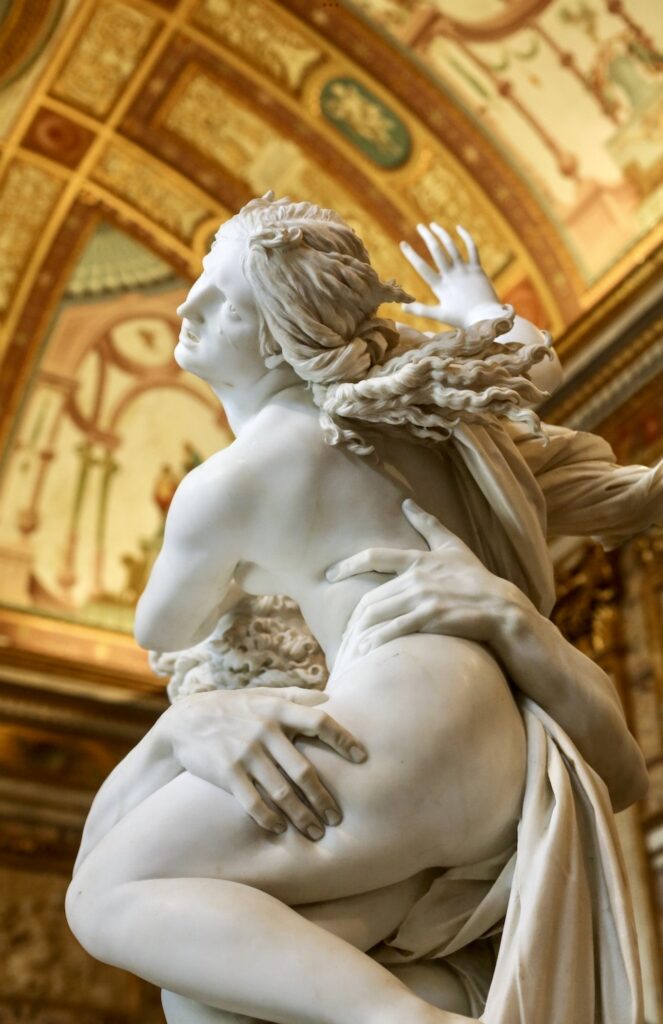
The ground floor of the Borghese Gallery is home to a plethora of perfectly arranged masterpieces.
The sculptures by Bernini, who is often credited with inventing the Baroque style, are the main attraction. The most beautiful pieces include The Rape of Persephone, Apollo and Daphne, and David.
In the Pinacoteca, you’ll discover some of Bernini’s self-portraits and smaller sculptures. In addition, you’ll find amazing masterpieces by Caravaggio
After exploring the Borghese Gallery, I highly recommend making your way to the west side of the Borghese Gardens towards the Piazza del Popolo. The terrace offers a stunning view of the piazza, especially at sunset.
If you’re in the mood for dinner, there are some excellent restaurants in the area. For a gourmet experience, check out the Michelin-starred Oliver Glowig or Sapori del Lord Byron. For a more casual and cozy atmosphere, try Girarrosto Toscano.
Alternatively, consider taking a food tour in Rome at night to discover the local cuisine and hidden gems. There are plenty of options catering to various interests.
- a food tour of the trendy Testaccio district
- a food tour in the beautiful Trastevere district
- a market food tour and pizza class
- a food and wine tour in the historic center
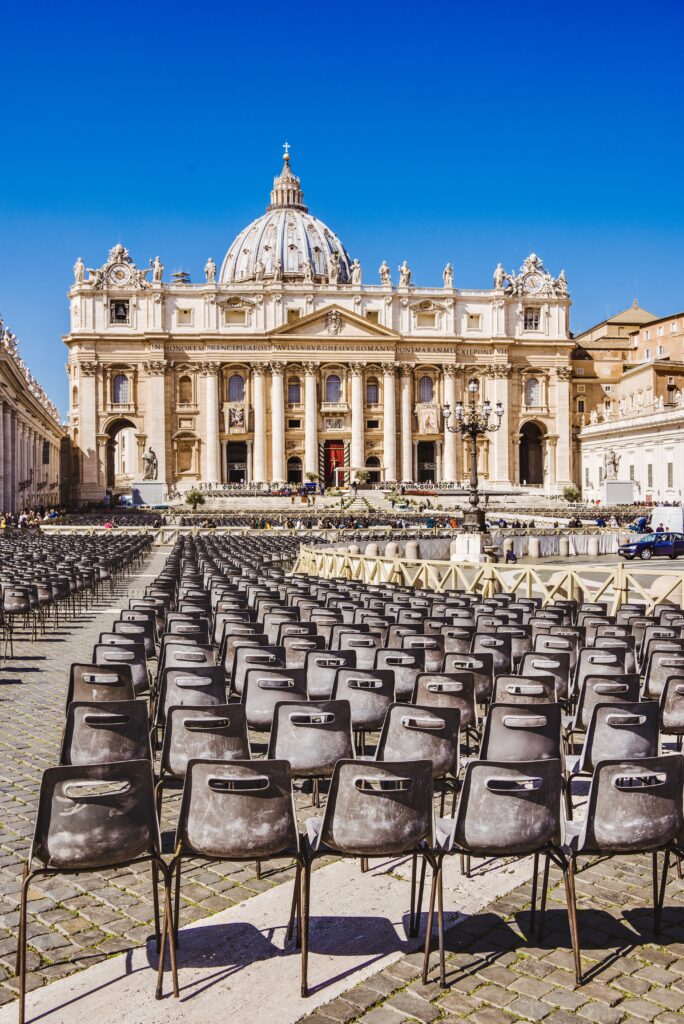
Day 3 AM: Vatican City
To kick off your final day in Rome, make your way to Vatican City.
Avoid visiting the Vatican on weekends as it tends to be extremely crowded. If your trip falls on a Saturday or Sunday, I recommend rearranging the itinerary and visiting the Vatican on a weekday instead.
The Vatican is home to one of the world’s most extensive art collections, featuring some of the most famous artworks on the planet. Whether you’re an art or history enthusiast, the Vatican is an absolute must-see attraction with 3 days in Rome.
You absolutely must pre-book a skip the line ticket for the Vatican. Or else you’ll be stuck in line for hours unless it’s the dead of winter.
I’ve stood in that line before and I will never do it again. It’s tortuous.
If you want to book a guided tour, you should to be picky about which one you select. Select a tour tailored to your own interests that includes what you want to see.
For example, one of my first visits to the Vatican I inadvertently booked a tour that didn’t include the Raphael Rooms and was disappointed. Click here to check out the Vatican tour options.
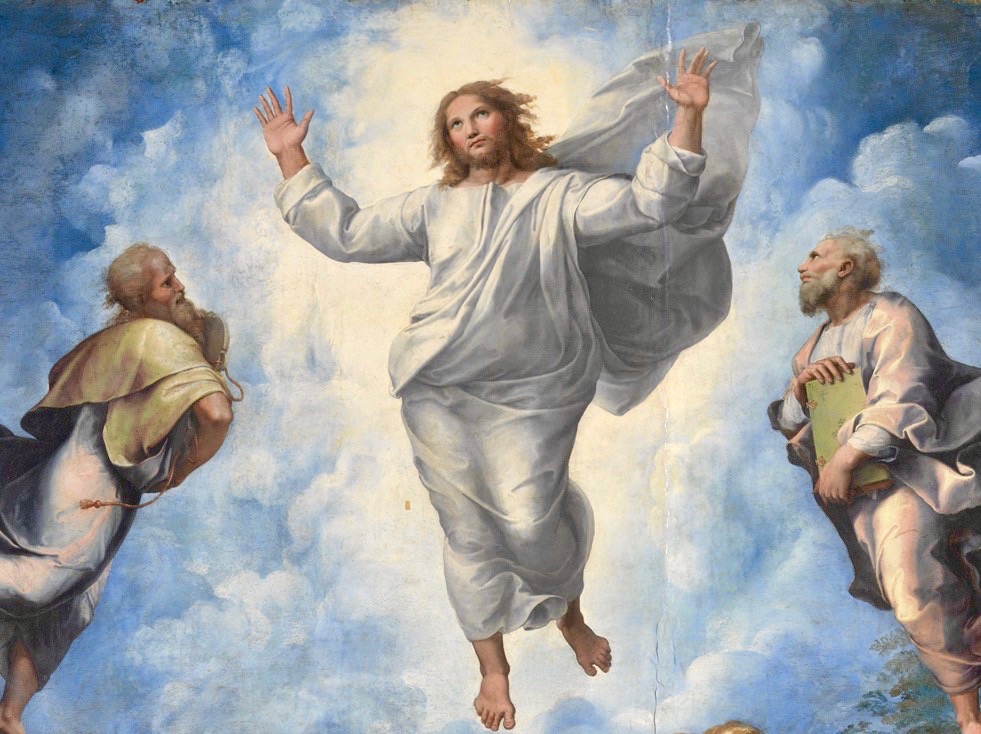
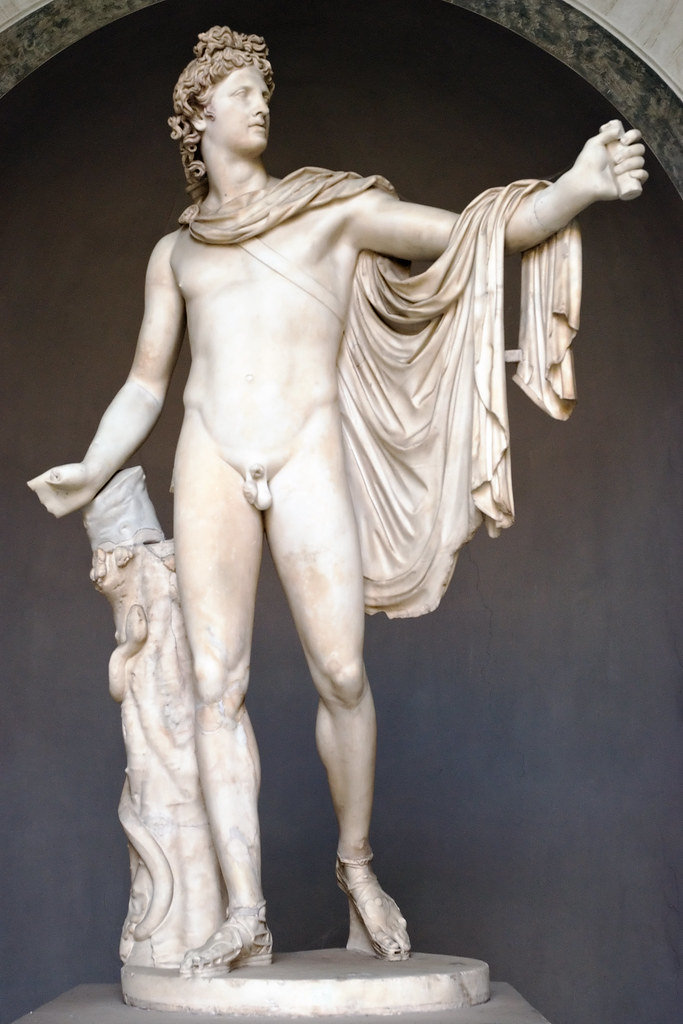
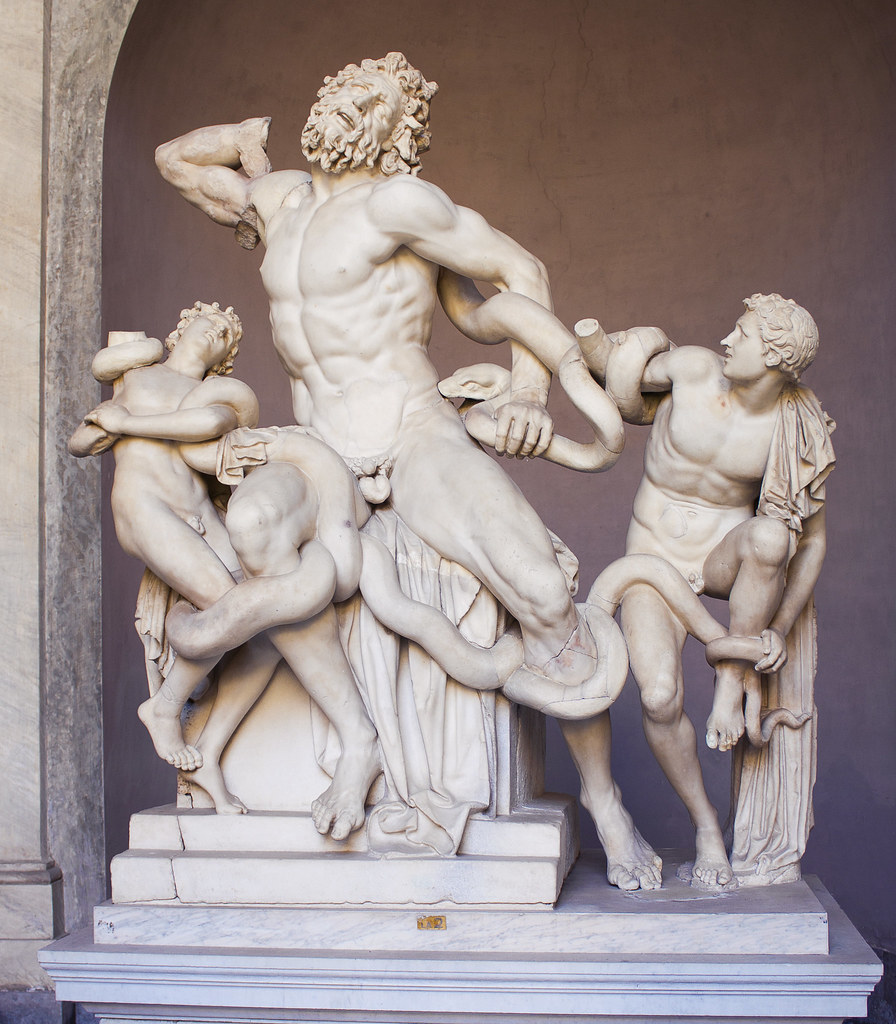
The Vatican is home to a vast collection of art, much of which was amassed by Pope Julius II.
The crown jewel of the Vatican is undoubtedly the Sistine Chapel, decorated with frescos by the renowned Renaissance artist, Michelangelo. It took Michelangelo 4 years to complete the 9 ceiling panels, which depict scenes from Genesis.
The frescos give the impression that the chapel is opening up to heaven. Contrary to popular belief, Michelangelo painted the frescos standing up, not lying down.
After exploring the Vatican’s treasures, make your way to St. Peter’s Basilica, which is the most famous church in Christendom. It’s a true Renaissance masterpiece designed by Bramante, Raphael, and Michelangelo.
The dome of St. Peter’s, which was designed in part by Michelangelo, is the tallest in the world.
The basilica is the burial place of St. Peter and past popes. It also houses the famous Bernini Baldacchino altar and Michelangelo’s tragically beautiful Pieta.
St. Peter’s is free to enter, but you’ll have to go security and lines can be epic.
For just € 6, you can climb up a narrow flight of stairs to inspect the dome at close range. There’s also an elevator for € 8.
From there, you’ll have a bird’s eye view of the nave below.
Continue higher to stand on the outside of the dome. This is where you have the iconic view of St. Peter’s Square and a panoramic view of Rome.
Here’s my complete guide to St. Peter’s Basilica, with tips for visiting. You can take a guided tour of St. Peters. You can only visit the underground grottos on a guided tour.
When you’re done Vatican-ing, head to the nearby Castle Sant’Angelo. The castle is a cylindrical beauty at the end of the Sant’Angelo Bridge.
It was once Hadrian’s Masoleum. It then served as a fortress, castle, and (now) museum.
It’s worth going inside if you have more than 3 days in Rome. The terrace on top serves up stunning views of St. Peters and the surrounding area. Click here to pre-book a ticket.
But since you’ve only got a half day left, I recommend you take a taxi to Rome’s atmospheric Trastevere neighborhood.
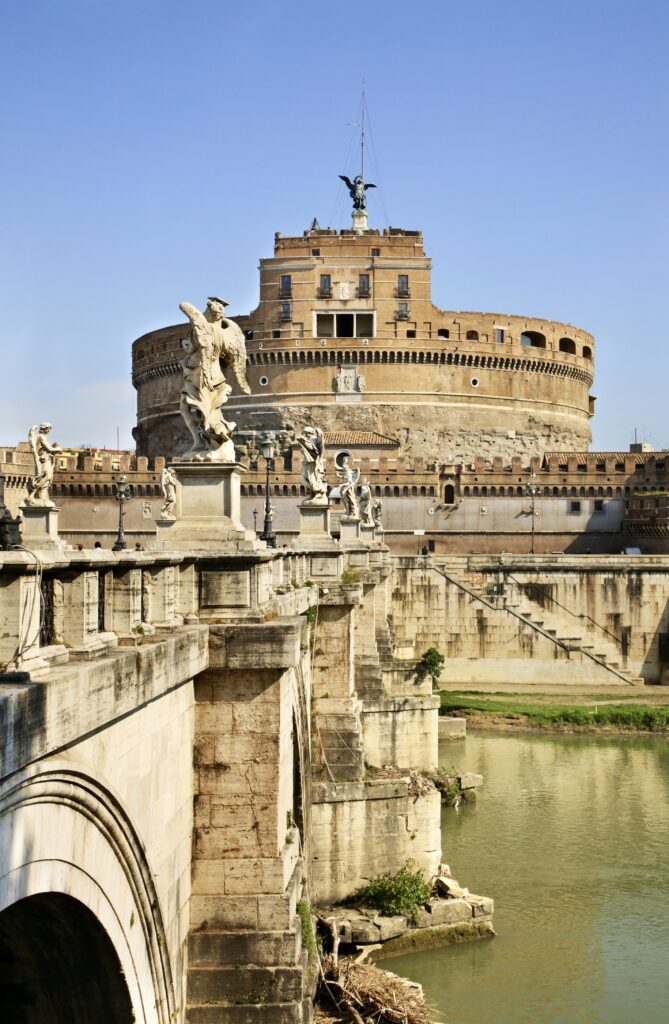
Day 3 PM: Trastevere
On you final afternoon in Rome, head to the Trastevere neighborhood across the Tiber River.
Trastevere is a picturesque village within a city. With its pastel facades, the neighborhood has the laidback vibe of small town Italy.
Trastevere is worth lingering in. You may want to book a guided walking tour or even a fun Segway tour to get oriented.
Its lovely cobbled and cafe-lined streets are vastly quieter than the cacaphony of central Rome. If you haven’t yet had lunch, grab a delicious panini at La Proscuitteria.
Then head to Villa Farnesina, an underrated small museum in a beautiful setting. It’s only open weekdays until 2:00 pm. If you can get there at 1:00 pm, you’ll have an hour, which is all you need.
This sumptuously decorated villa was built in the early 1500s for one of Europe’s richest Renaissance men, Agostino Chigi. The villa has some magnificent Raphael frescos.
Click here to book a 2 hour guided tour of the lovely Villa Farnesina.
Take a leisurely stroll to the heart of Trastevere at Piazza di Santa Maria, and make your way into the Santa Maria Basilica, which is the oldest church dedicated to Mary in Rome.
The church dates back to the 3rd century, but its Romanesque bell tower is from the 12th century. Inside the church, the beautiful 12th century mosaics in the apse are worth admiring.
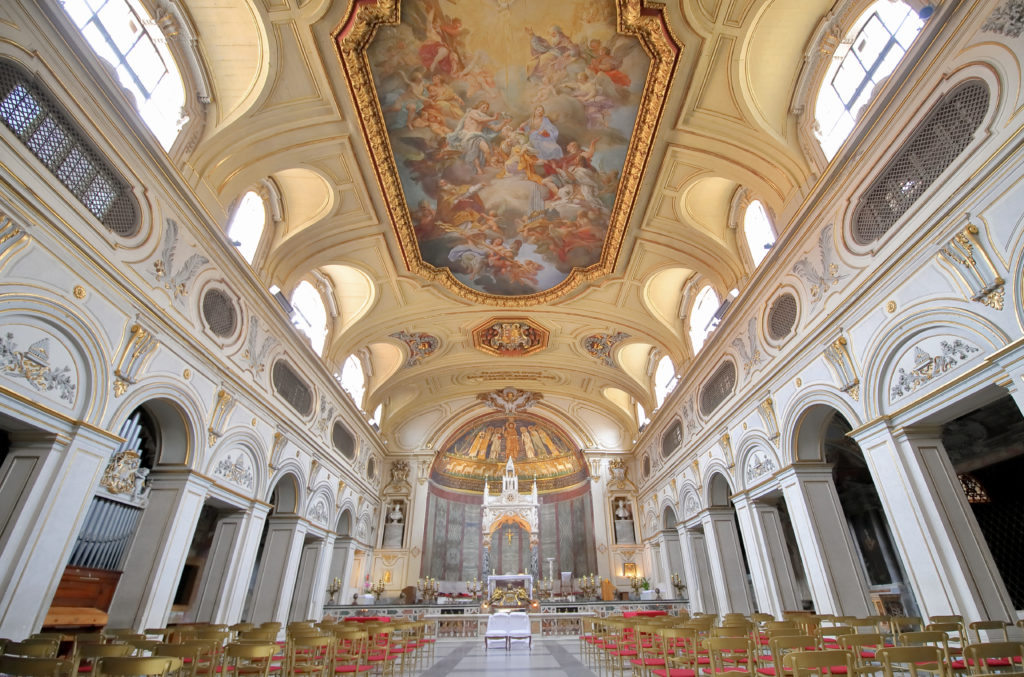
The exterior is a mishmash of architectural styles. But the interior is a luminous gold and cream combination.
It’s time for happy hour. Settle in for some wine at Enoteca Ferrara or La Vita Enoteca. If you want to eat in Trastevere, try Ombre Rosse or Pianostrada Laboratorio di Cucina.
Another restaurant I enjoyed is La Sora Lella on Isola Tiberna. It’s one of Rome’s oldest restaurants, serving up classic rustic food in a casual setting.
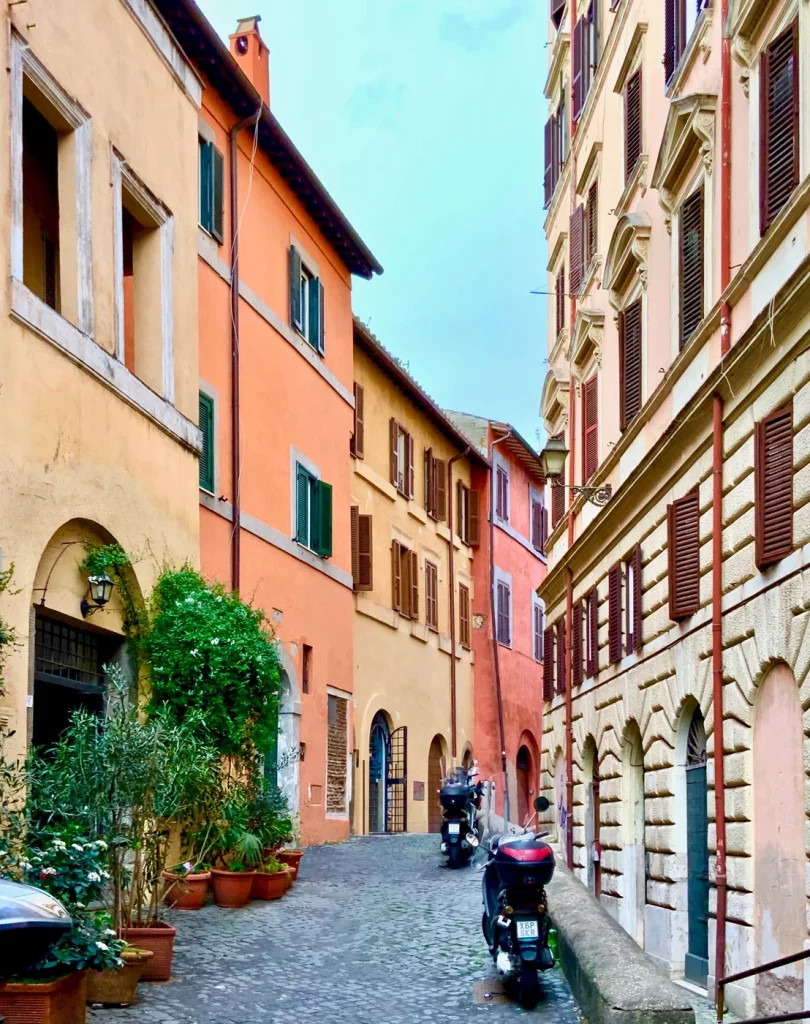
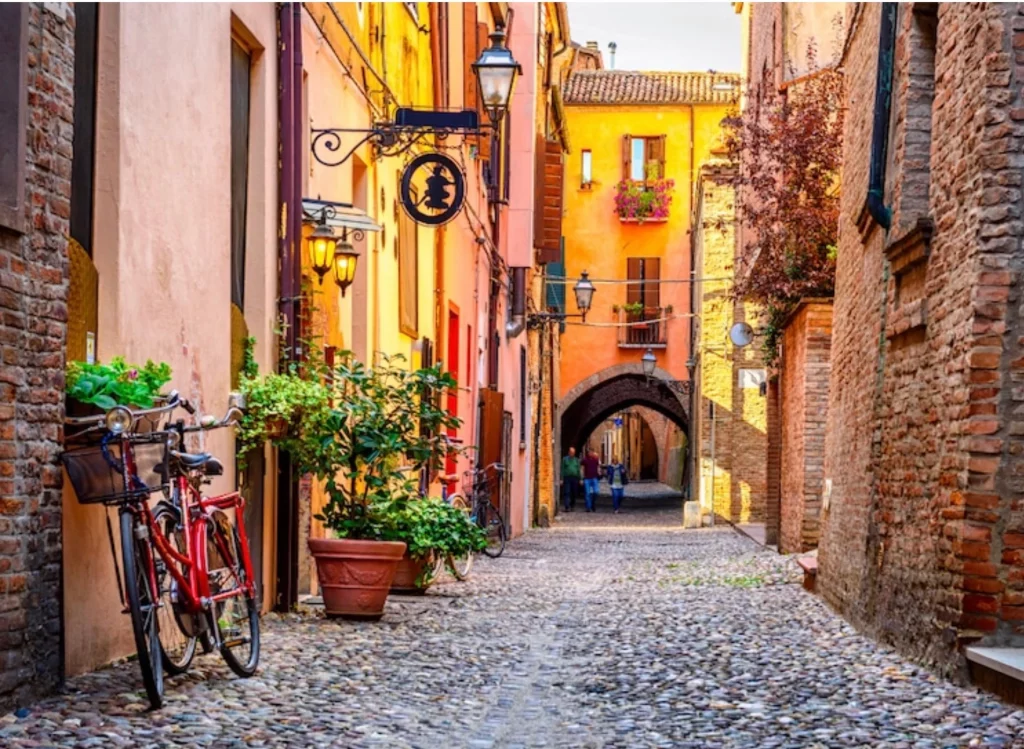
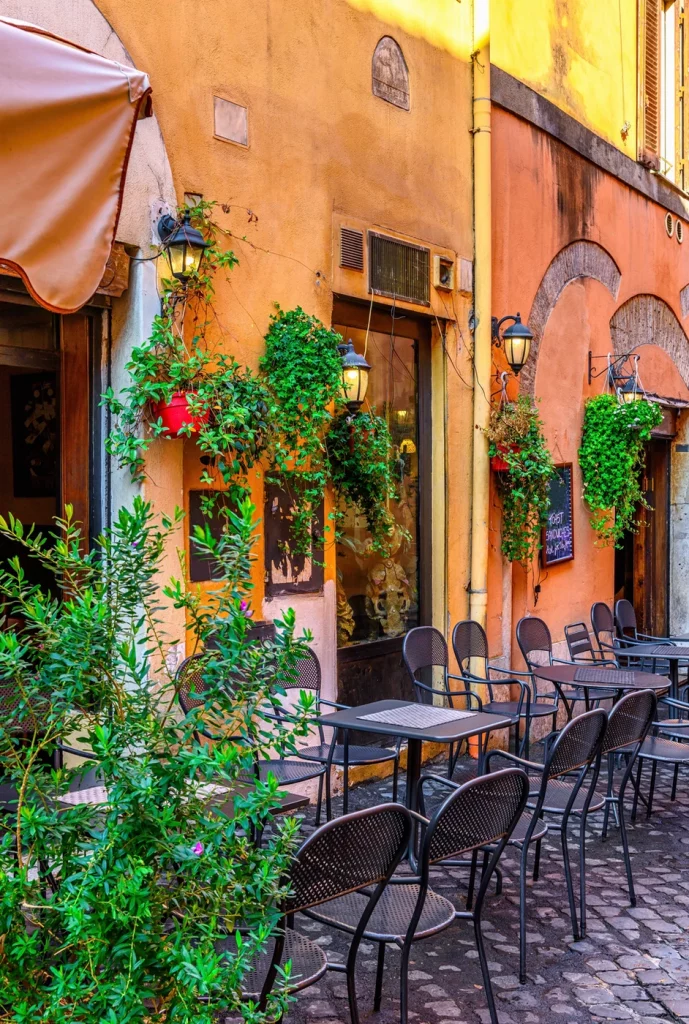
Must Know Tips for Spending 3 Days In Rome
Here are some tips for visiting for Rome. You can also check out more general tips for visiting Italy.
1. How To Get Around Rome
Rome is a city that can be explored on foot, so make sure you bring comfortable shoes as I found myself easily walking 10 miles a day.
Personally, I wasn’t a fan of the metro. There are only two lines, it can get very crowded, and is known for pickpocketing. The bus system was also too confusing for my taste.
In my experience, I found that taking a taxi was the easiest and fastest way to travel longer distances, such as from the Vatican to Trastevere. You can usually find taxis at taxi stands, as hailing them on the street can be difficult.
Keep in mind that some taxi drivers may claim that they don’t accept credit cards, so it’s best to have cash on hand. Alternatively, you can also use Uber to get around.
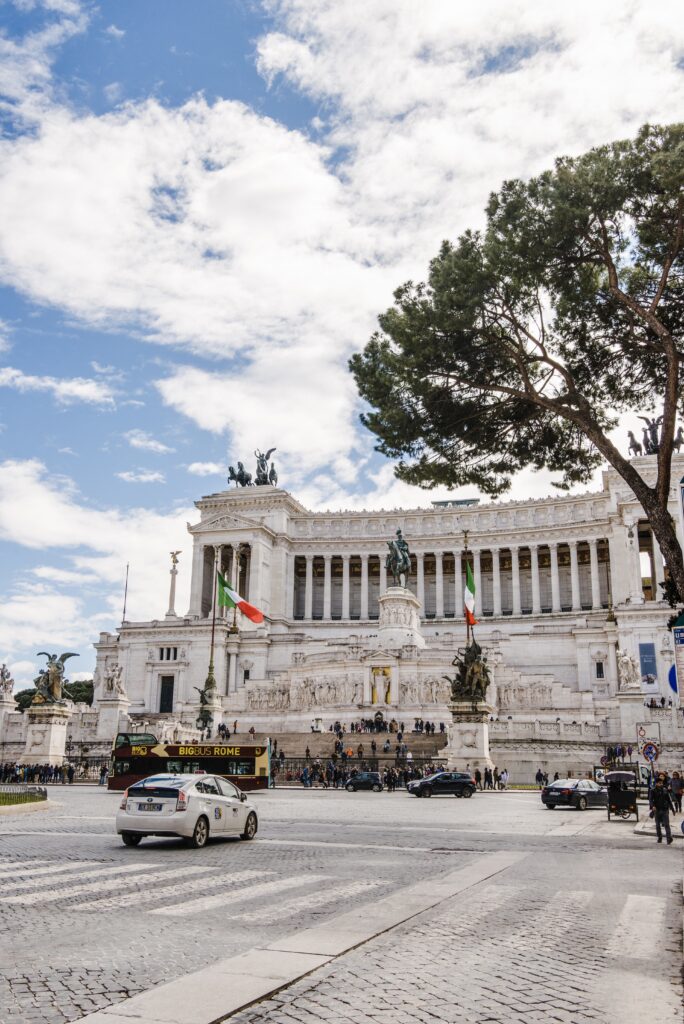
Definitely don’t have a car in Rome. The drivers are very aggressive and many streets are teeny tiny.
There are plenty of other fun ways to explore Rome, for every interest. You might consider booking one of these tours:
- a daytime Segway tour
- a nighttime Segway tour
- an e-bike tour
- the hop on hop off bus tour
- a private tour by car
- a classic vespa tour
2. How To Get To Rome From The Airport
While I had decent luck with taxis once I was in central Rome, one place you won’t fare well is Fiumicino Airport. The cabs aren’t well regulated and known to rip off tourists. Plus, the lines can be epically long.
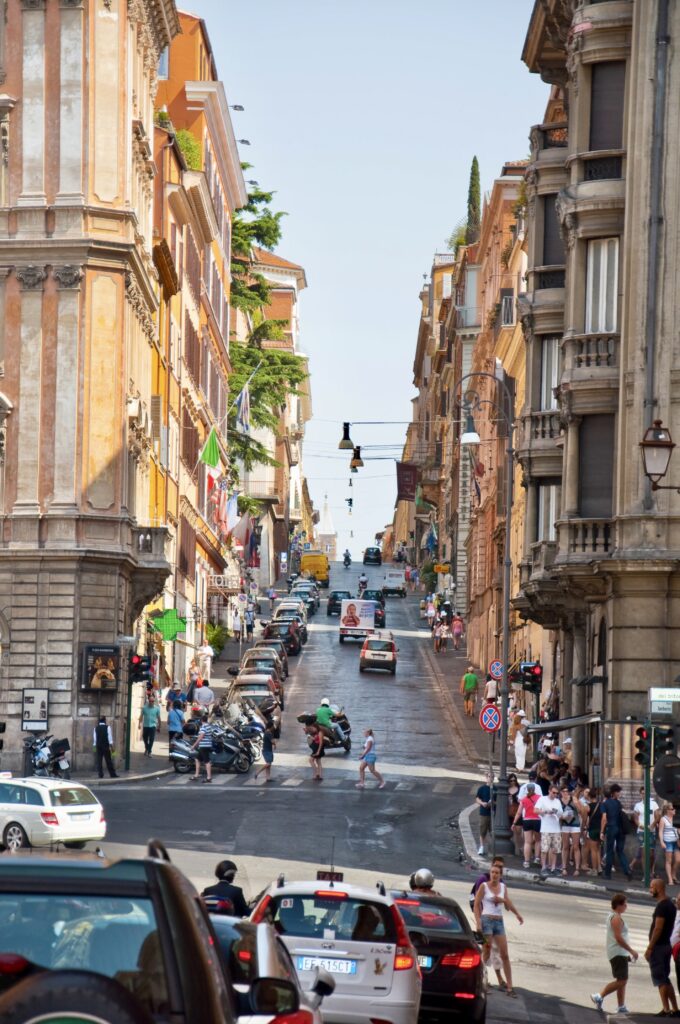
It’s easiest to arrange a private transfer with your hotel or Air Bnb host. Or book your own private transfer online.
You can also take the train. The Leonardo Express leaves every 15 minutes from the Felice Santini train station near the airport.
It drops you off in Rome’s Termini Station, which is northeast Rome. Click here to book a round trip ticket.
3. City Passes
If you’re in Rome for at least 3 days, consider purchasing the Roma Pass. For just 38 euros, you’ll have full access to public transportation, admission to two museums, and discounts on performance and exhibition tickets.
Alternatively, try the more comprehensive Omnia Rome and Vatican Card. It consists of the Roma Pass and an Omnia Card.
Most importantly, it gives you skip the line access to the Vatican Museums, St. Peter’s Basilica, and the Colosseum.
4. Where To Stay In Rome
One of my personal favorites hotels in Rome is the Rome Cavalieri. The hotel has its own art collection and an art historian will give you a free tour. You will also love the J.K. Place Roma, a simply gorgeous boutique hotel.
If you’re a first timer in Rome, you may want to stay in the historic center around the Pantheon or Piazza Navona. Some good options are the Liberty Boutique Hotel, the Hotel Maalat, Deco Roma, or Hotel Hassler Roma.
The Hassler is a real favorite of mine. It boasts breathtaking panoramic views of Rome and Piazza di Spagna.
If you want to stay near the Imperial ruins, Palazzo Manfredi and the Inn at The Roman Forum are excellent choices.
The terrace at the Manfredi is to die for, with breathtaking views. The Inn also has a rooftop terrace and there are even ruins inside the hotel.
If you want to stay in the quieter Monti area, which makes a great base, the Palazzo Manfredi (Colosseum views), Villa Spalletti Trivelli (Roman townhouse), and Roma Luxus (former 18th century palace) are fantastic choices.
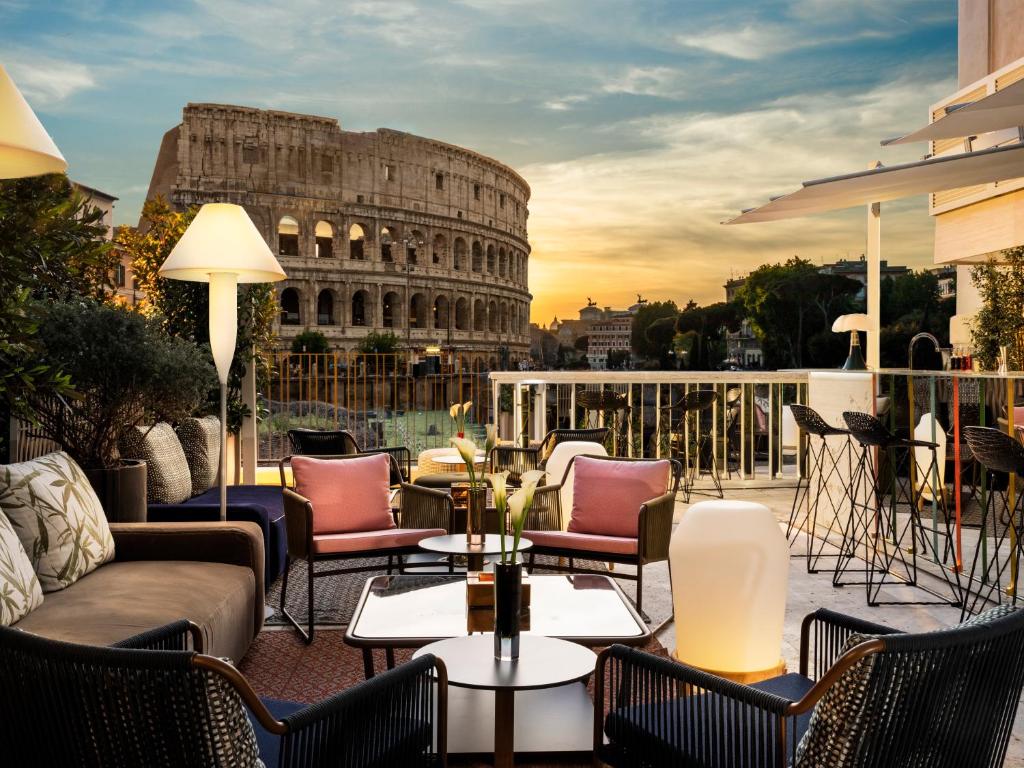
I hope you’ve enjoyed my 3 days in Rome itinerary. For more information on Rome, check out some of my other in depth guides:
- 8 Ways To Spend 1 days in Rome
- Hidden Gems in Rome
- Best Day Trips From Rome
- Rome’s Palace Museums
- Bernini Guide to Rome
- Caravaggio Guide to Rome
- Guide to the Best Museums in Rome
- Guide To the Doria Pamphilj Gallery
- Must See Archaeological Sites & Ruins
- 50 Facts About Rome
If you’d like to spend 3 days in Rome, pin it for later.

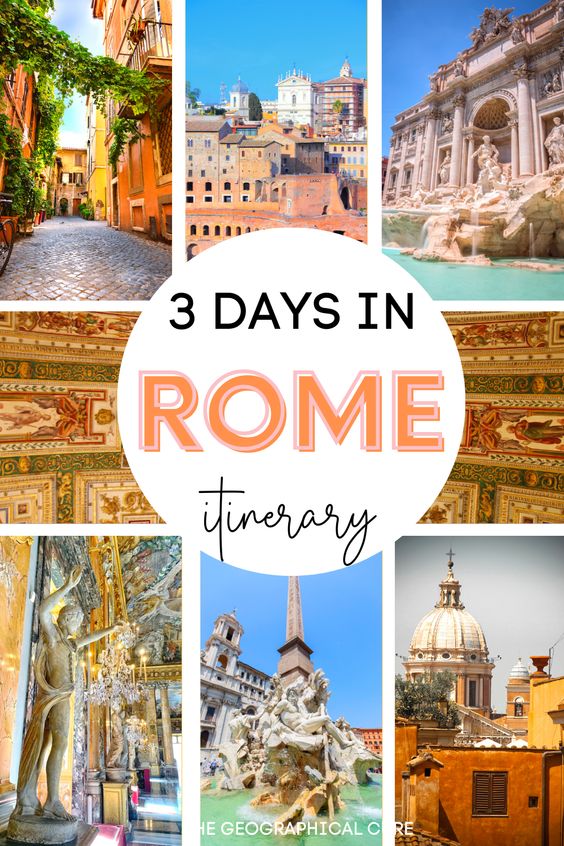
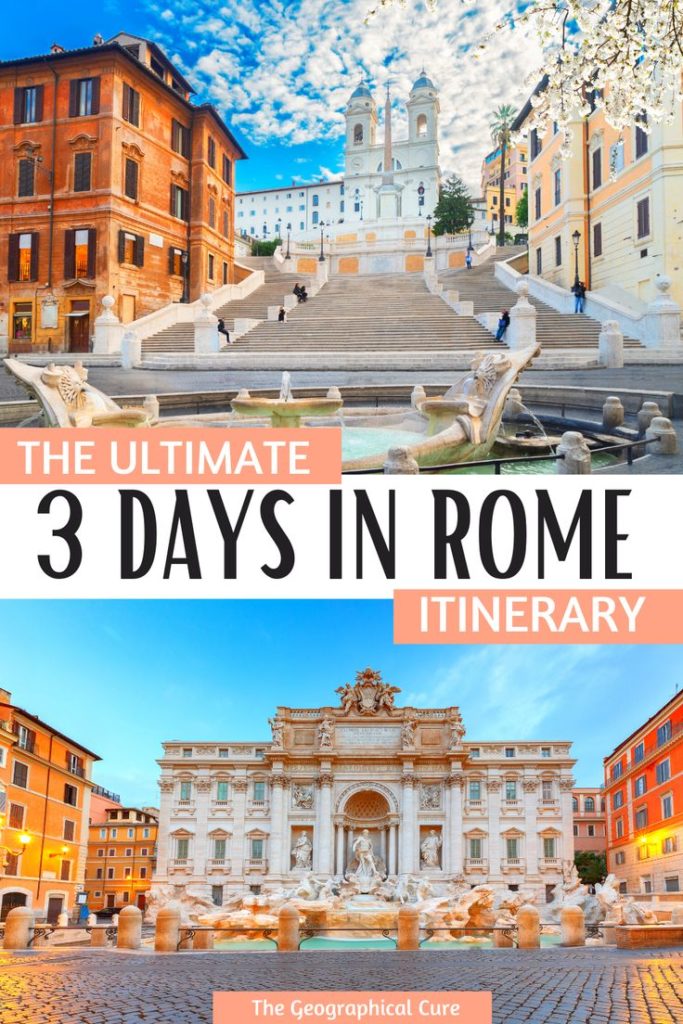
Superb, very informative, Pictures are fantastic, Appreciated the restaurant suggestions
Liked the history of Roman emperors
Just what I needed since I will be spending 3 days in Rome
GRAZIE
Don
Ooh, it sounds to me like you’re going to have a fantastic vacation! I love Rome too.